Marine Ecology Exam 2
1/112
There's no tags or description
Looks like no tags are added yet.
Name | Mastery | Learn | Test | Matching | Spaced |
|---|
No study sessions yet.
113 Terms
Where do biotic factors matter more in structuring the rocky intertidal communities?
Lower intertidal zone
Competition, less habitat space, predators have access to this area
Why might muddy shores be less harsh to live in than rocky ones?
Heat doesn’t vary as much like it does at rock (don’t lose or gain heat as quickly)
What are some morphological and behavioral adaptations to avoiding dessication in the rocky intertidal?
1) densely packed organisms
2) closed body plan (shell, valve)
3) color of the shells (light, dark)
4) Home scar
5) Protrusions/ridges to radiate heat
6) Just accostumed to drying out/they can handle it
Zonation
Horizontal banding of organisms
Zones succeed each other vertically
Zonation in the rocky intertidal in scotland
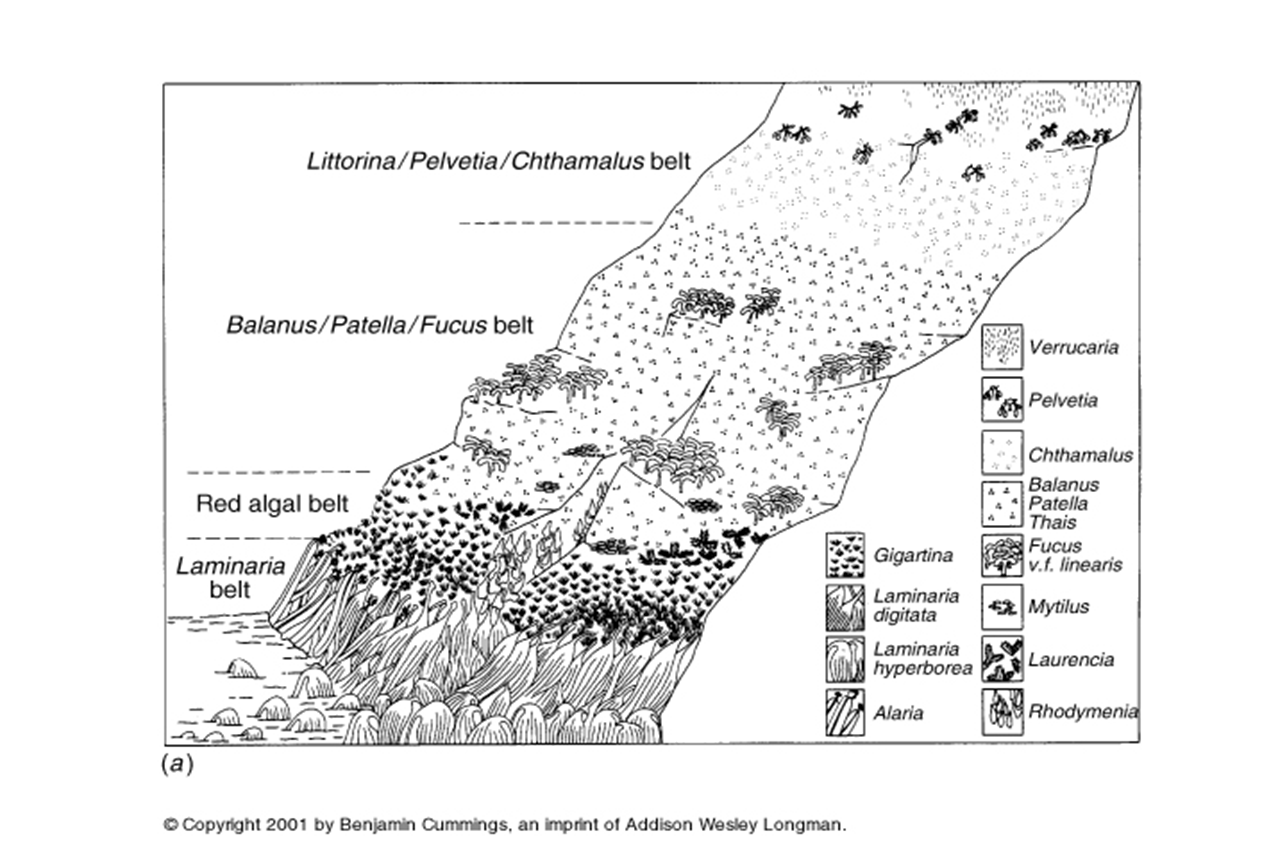
brown algae, fluffy red algae, fucus algae, barnacles, snails
PATTERN IS RELATIVELY PREDICTABLE
Stephenson’s universal scheme of zonation for rocky shores: Does he believe the pattern is unpredictable or predictable?
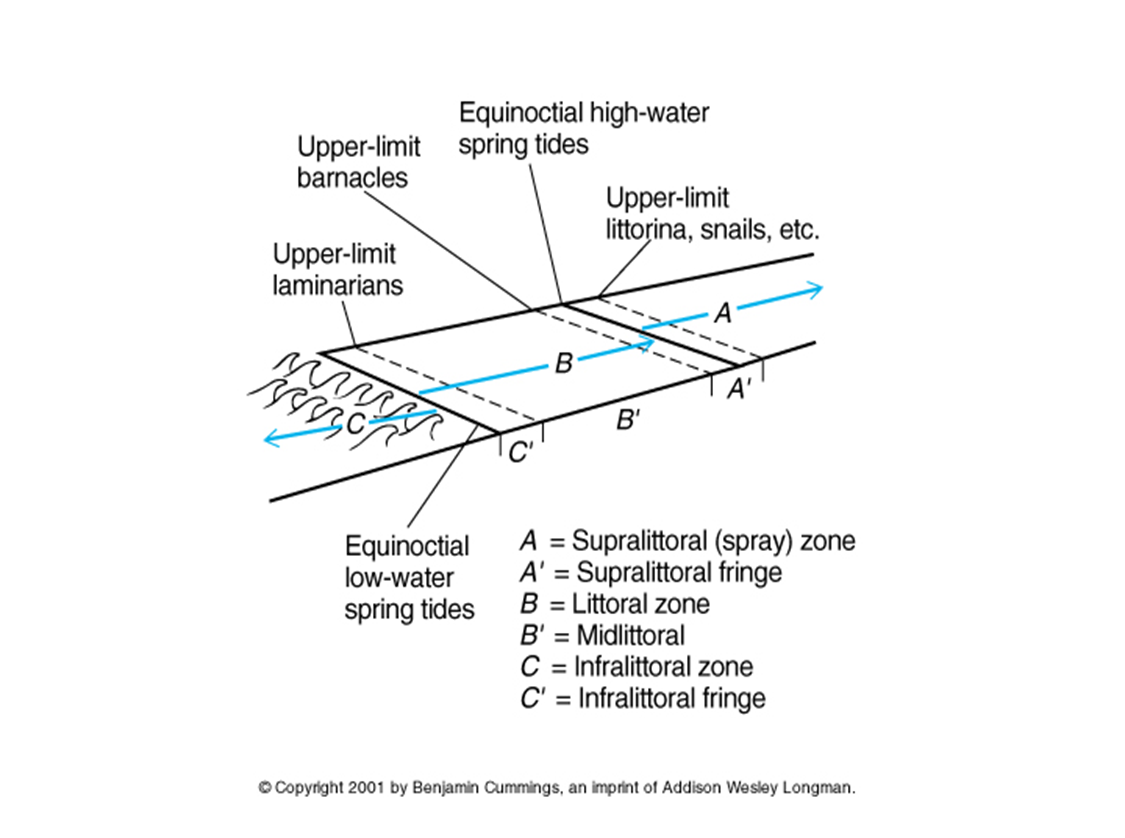
Believes the pattern is predictable
What are the physical factors that cause zonation? And do they determine the lower or upper limits of occurence of organisms?
dessication
temperature
starvation when sessile filter feeders are not covered by water
lack of larval settlement
positive interactions such as dense aggregations
Why are positive interactions helpful when conditions are harsh?
Densely packed organisms can help each other
What are the biological factors that cause zonation?
competition
predation
grazing (herbivory)
positive interactions
recruitment (larval settlement; larvae settled successfully and on track to becoming adults)
What is the difference in zonation between the wave-exposed and protected New England coasts?
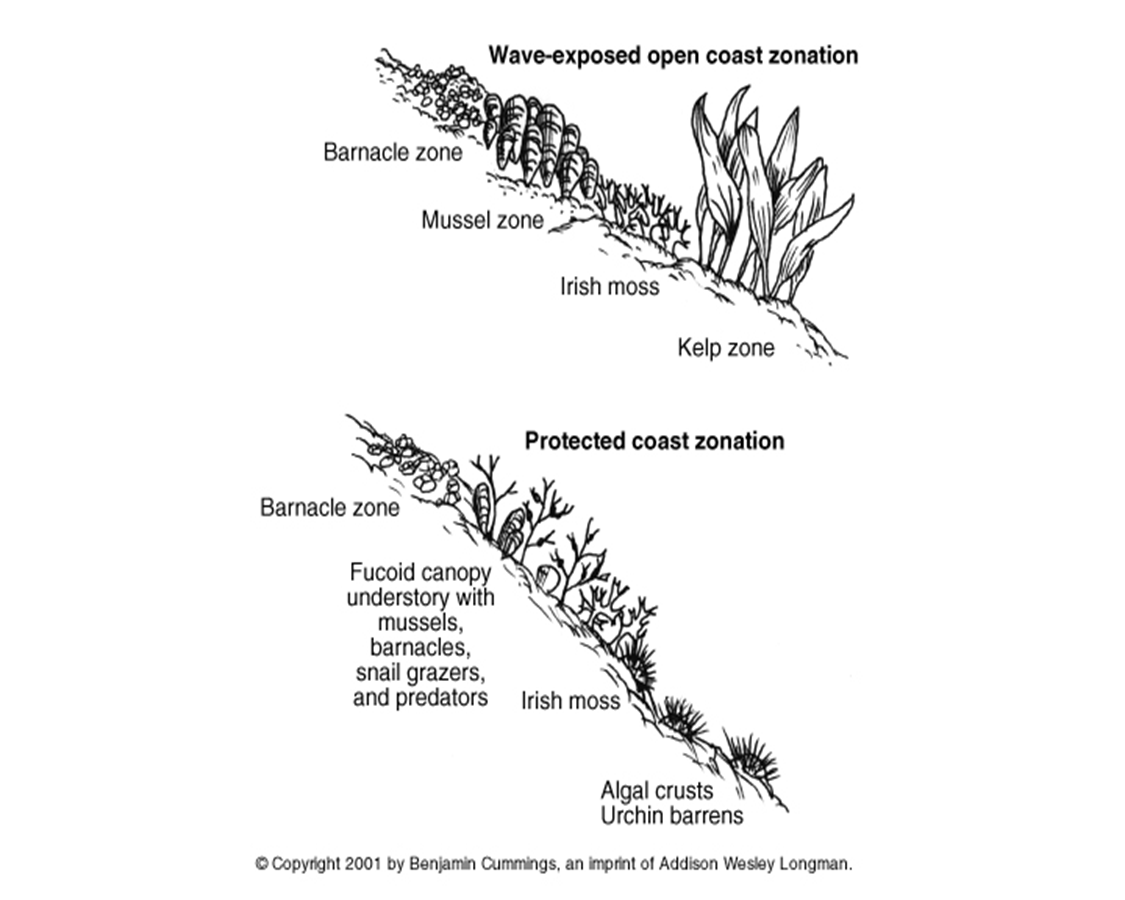
What is the zonation of the acorn barnacles: Chthamalus and Semibalanus?
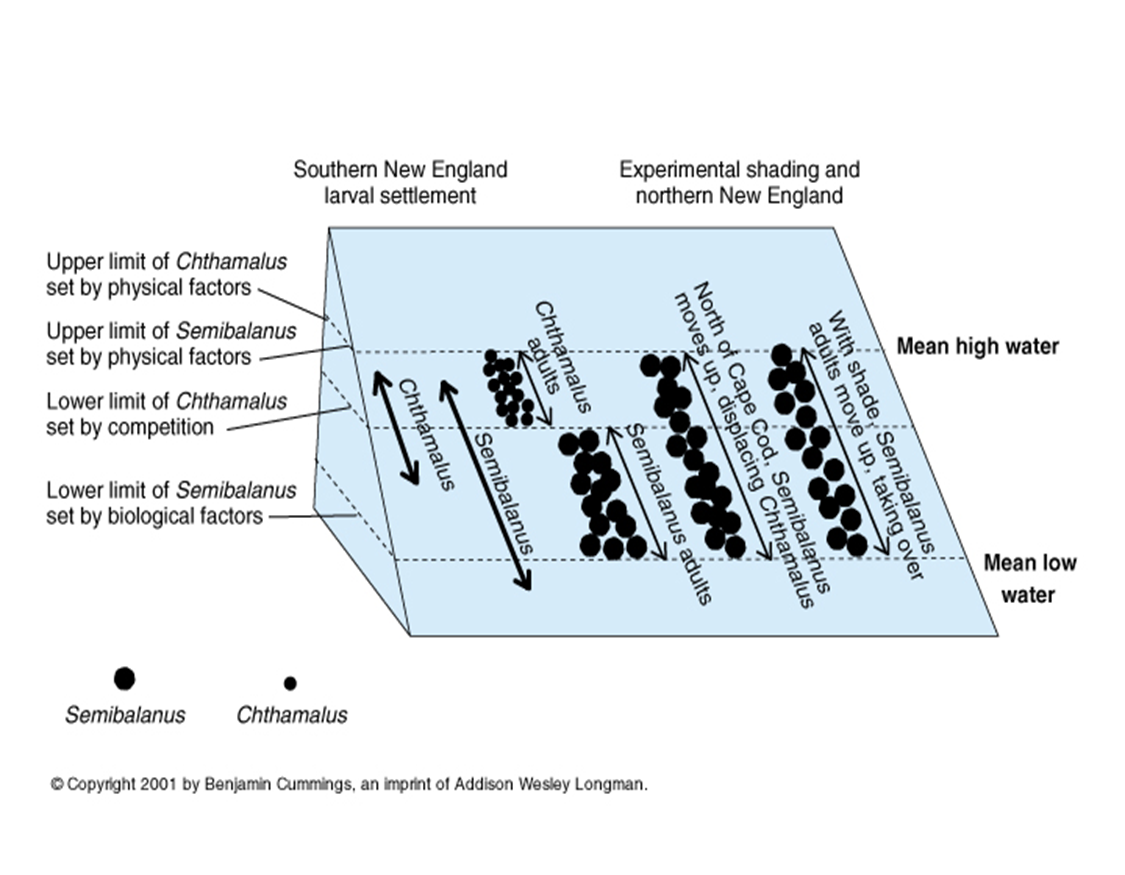
upper limit of chthamalus sis set by physical factors (can’t do it, conditions too hard)
chthamalus can’t settle lower in intertidal because it will get outcompeted by semibalanus (better at competing)
chthamalus can tolerate higher temp that semibalanus can’t
chthamalus would love to settle all throughout the intertidal but can’t because it is competively excluded by semibalanus
it is a good thing that chthamalus can tolerate higher temp than semibalanus or it would have no niche
*Chthamalus tolerates higher temp
than Semibalanus
*Semibalanus is competitively dominant
over Chthamalus
What do you think the relative percentage of biomass is for pelagic organisms? Include bacteria, phytoplankton, zooplankton, planktivorous fish, and predators
Primary producers: smaller things make up larger percentage of biomass, predators make up fewer
What are the differences in biomass distribution between pelagic and coastal ecosystems?
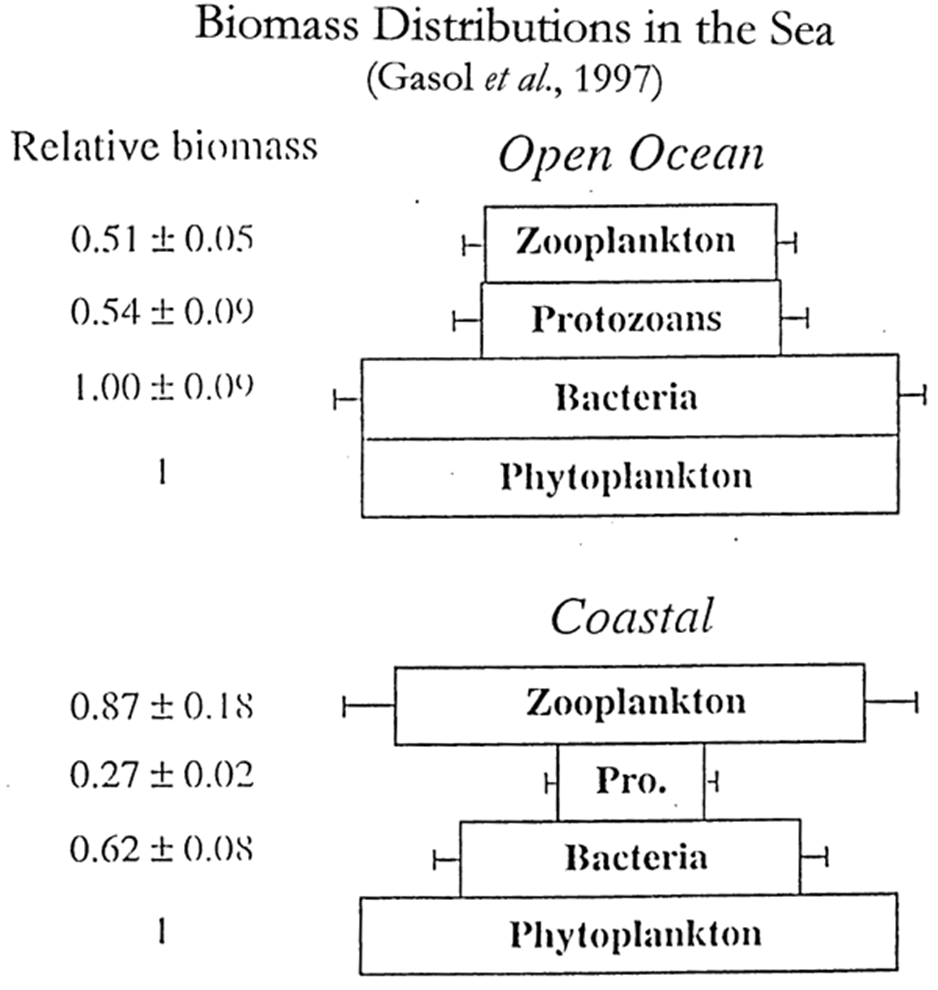
Differences in food webs between open ocean, continental shelves, and upwelling areas?
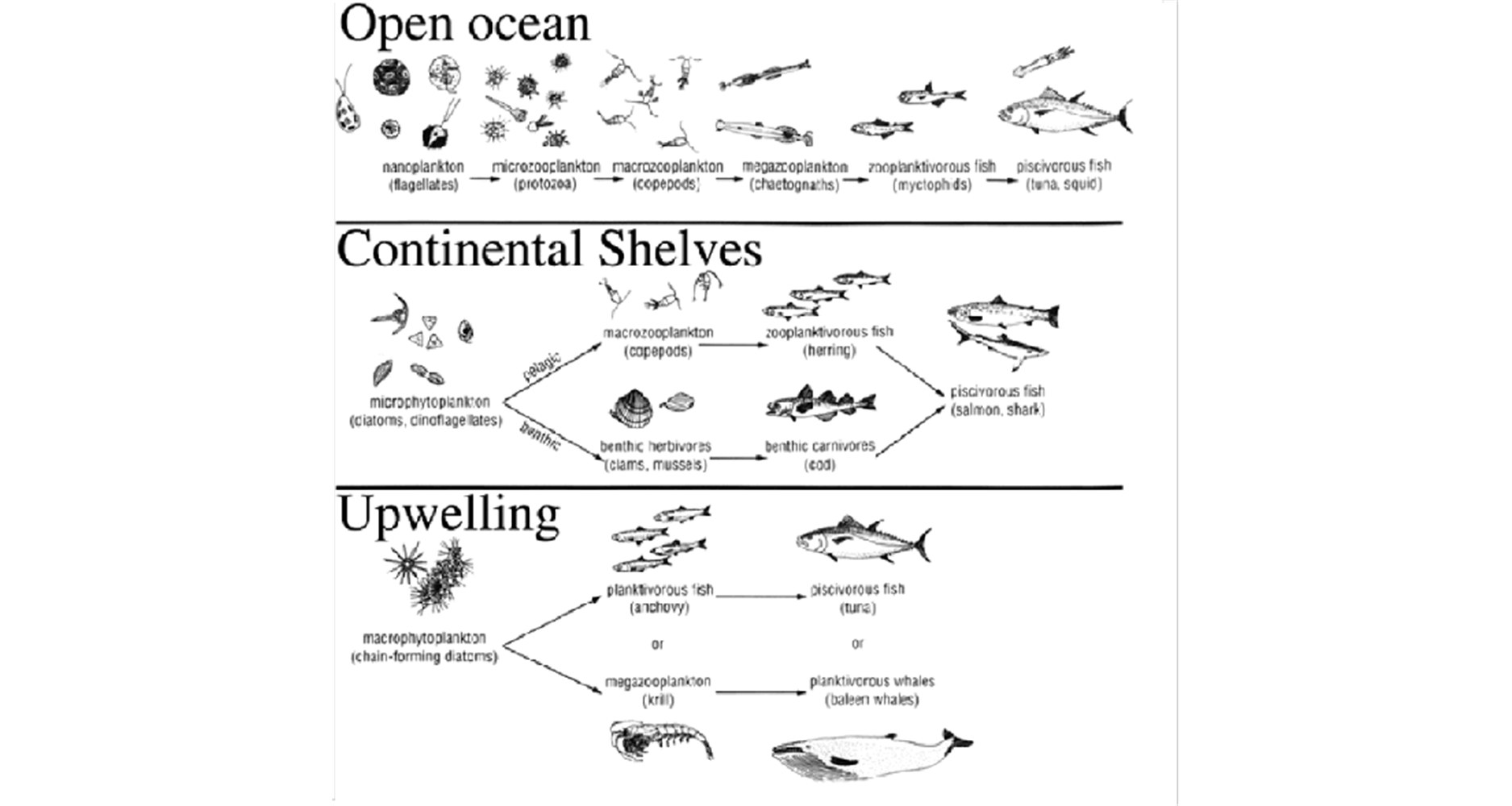
continental shelves: shorter foodwebs, alternate options
upwelling: short foodweb, whales eat krill directly
What is the percentage of marine species out of the world species? Of the marine species what is the percentage of benthic vs. pelagic?
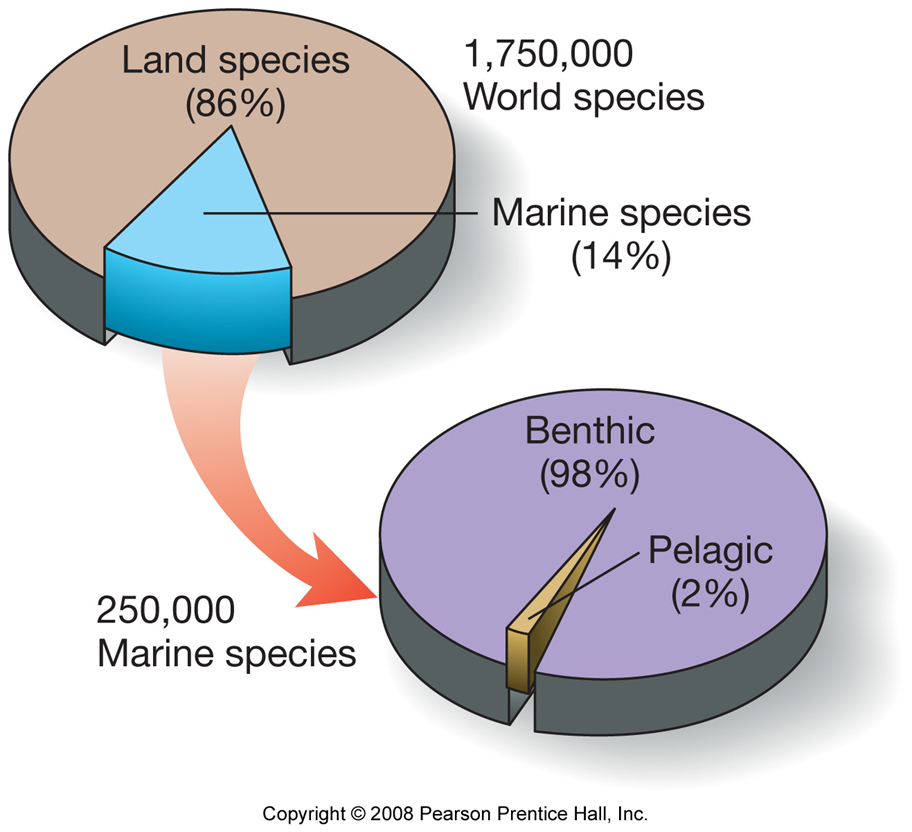
What are plankton, nekton, and benthos and where are they found?
Plankton: drifters, pelagic
Nekton: swimmers, pelagic
Benthos: bottom dwellers, benthic
Why such a small percentage of pelagic organisms?
Not a great representation of reality, hard to find marine species due to cost, resources needed
Plankton: Does most biomass on earth consist of plankton?
Yes
Plankton
Phytoplankton are…..
autotrophic
Plankton
Zooplankton are …..
heterotrophic
Are bacterioplankton and virioplankton plankton?
Yes
Plankton
Holoplankton … what life stage are they?
Entire lives as plankton
Plankton
Meroplankton … life stages
part of lives as plankton
juvenile or larval stages
Plankton
Macroplankton …. what are they
Picoplankton ….. what are they
Macro = large floaters such as jellyfish or sargassum
Pico = very small floaters such as bacterioplankton
Nekton
Do they swim? What organisms are they?
independent swimmers
most adult fish and squid
marine mammals
marine reptiles
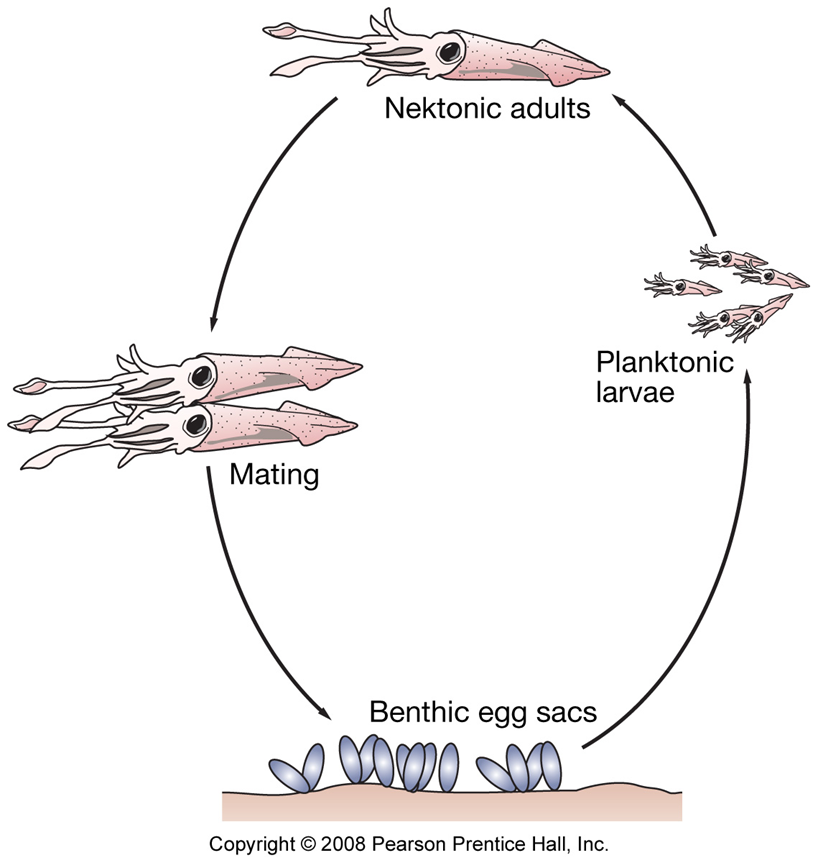
Differences in swimming abilities of plankton vs. nekton?
Plankton = drift, can’t control where they drift to (in current that they’re in, don’t move out of current)
Nekton = swim, can get out of a current (sharks, fish, cephalopods, sea turtles)
What two organisms do zookplankton include?
copepods (T shape) and foraminifera.
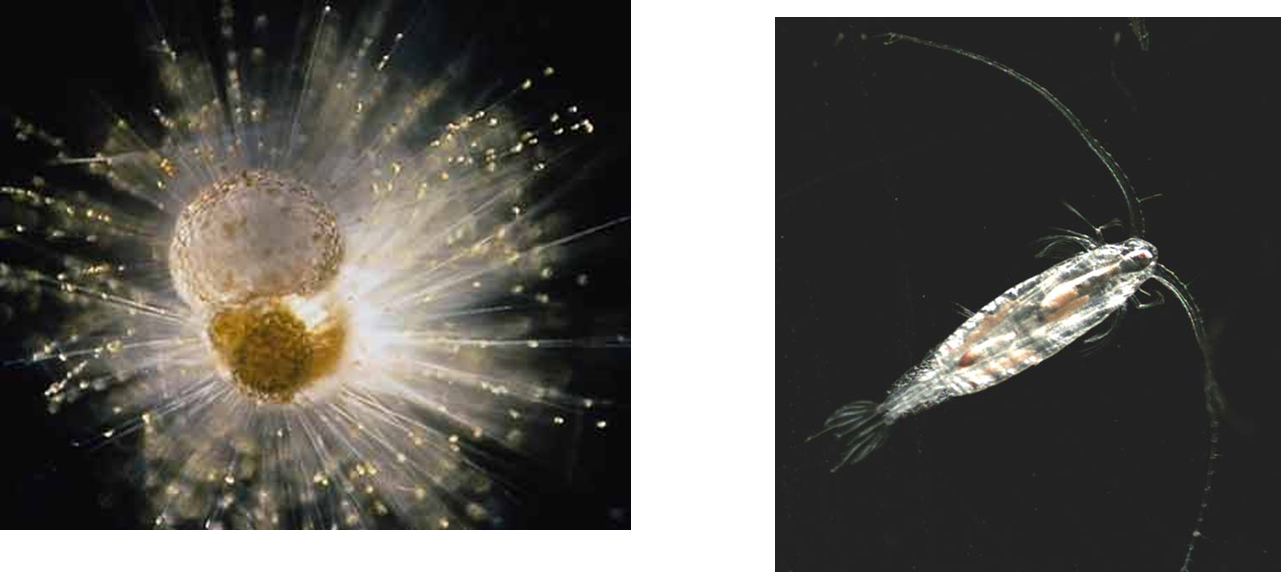
Do zooplankton (animal plankton) have high or low RE?
Low RE
How do copepods feed? (selective adaptive strategies)
Appendages generate flow to drive plankton to their mouth parts
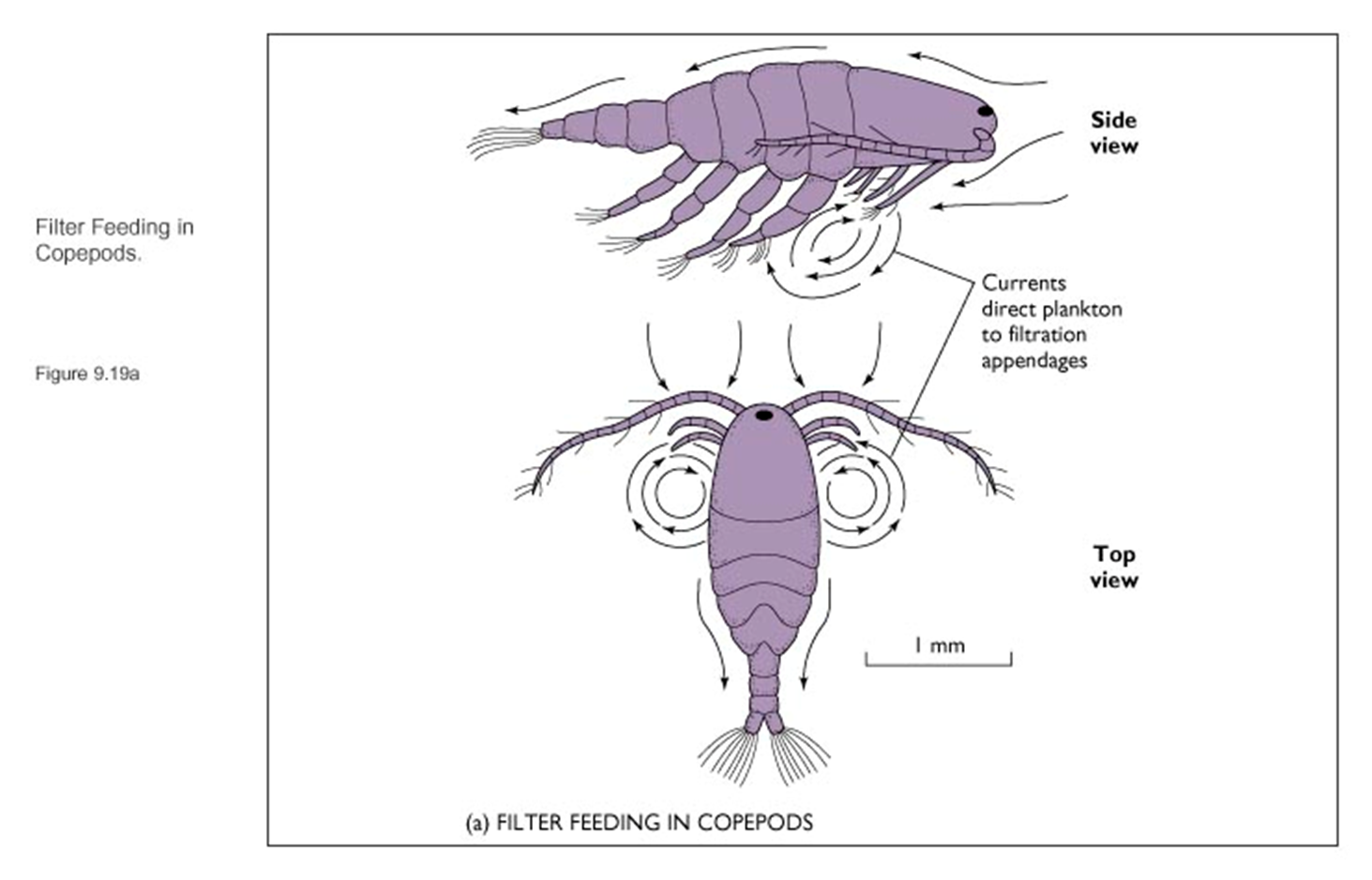
Are zooplankton grazers in the ocean?
If so, what types?
Yes
1) Protists (single cells): engulf food, narrow size range of food
2) Gelatinous animals: “Hoover” or stick to prey, wide size range of food
3) Crustaceans: “Handle” their food, narrow size range of food
Chthamalus and semibalanus coexist in the rocky intertidal: what determines their distribution?
Competition
Give an example of meroplankton
reef fish, jellyfish
Why are copepods and krill important in pelagic ecosystems?
Lots of organisms eat them
What is a main challenge of pelagic organisms?
Must stay afloat
Why is it important for phytoplankton to stay afloat?
Need to get enough light for photosynthesis
(Once sinking or being carried out of the photic zone by water movement, they will likely dies, unless they can somehow get back into the sunlit layer)
Why is it important for zooplankton to stay afloat?
Need sunlight for their bio rhythms and their food is in the shallow water
How do epipelagic organisms float?
Have special adaptations that make them more buoyant:
1) Increased resistance through increased surface to volume (larger organisms)
2) Long projections/spines = inc drag
3) Store lipids, such as oils or fats (sharks have oily liver)
4) Pockets of gas (air sacs)
How do pelagic organisms move?
Some have cilia and flagella
Diel vertical migration
transducer, signal goes down. How quick signal bounces back depends on how deep the organism is/ if it is hard or soft
As surveys progress, approach night plankton that come up to the surface the krill will swim up to where the phytoplankton is at the surface
Diel vertical migration (DVM) is the daily, synchronized movement of billions of marine animals from the deep ocean to the surface and back down again. This phenomenon occurs as animals ascend to the surface to feed under the cover of darkness and descend to deeper waters at dawn to avoid predators, making it the largest migration on Earth
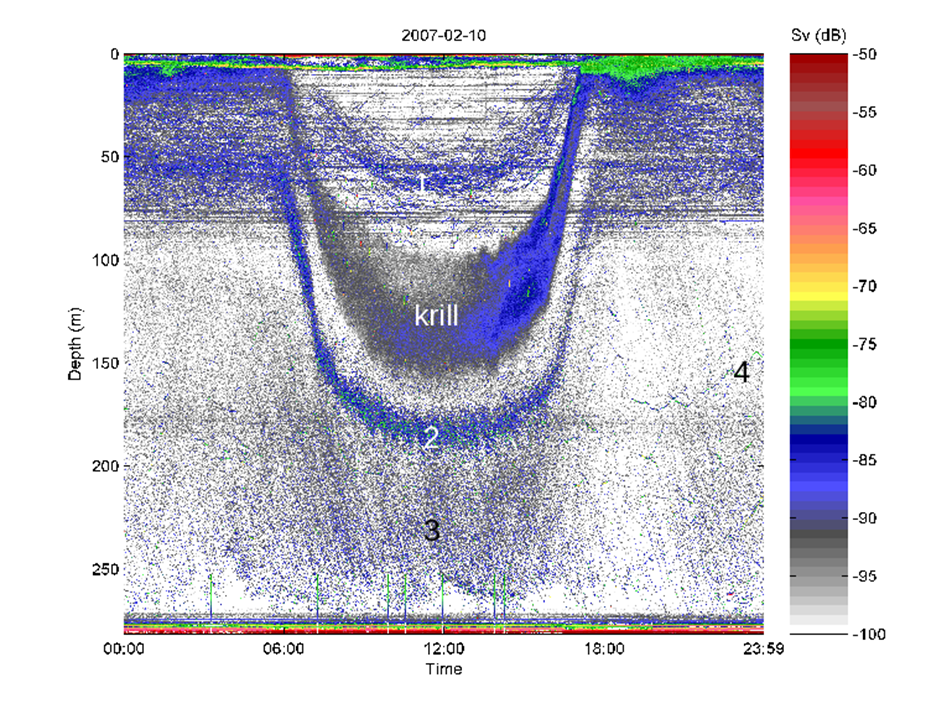
How does organic matter get to the bottom of the ocean?
Dead cells and fecal pellets (plankton poop) sink, big ones sink faster
Dissolved organic matter, pieces of gelatinous animals etc. stick together and form bigger “marine snow” that sinks
The organic debris is collectively known as Detritus
Marine snow formation how?
While photosynthesizing DOM is exuded
These molecules encounter one another in the aqueous environment
Opposing charges bring the particles together to form larger particles
The particles are extremely sticky and easily adhere to each other as well as other particles in the water
Where does most of marine sediments come from? What are the diff types of sediments?
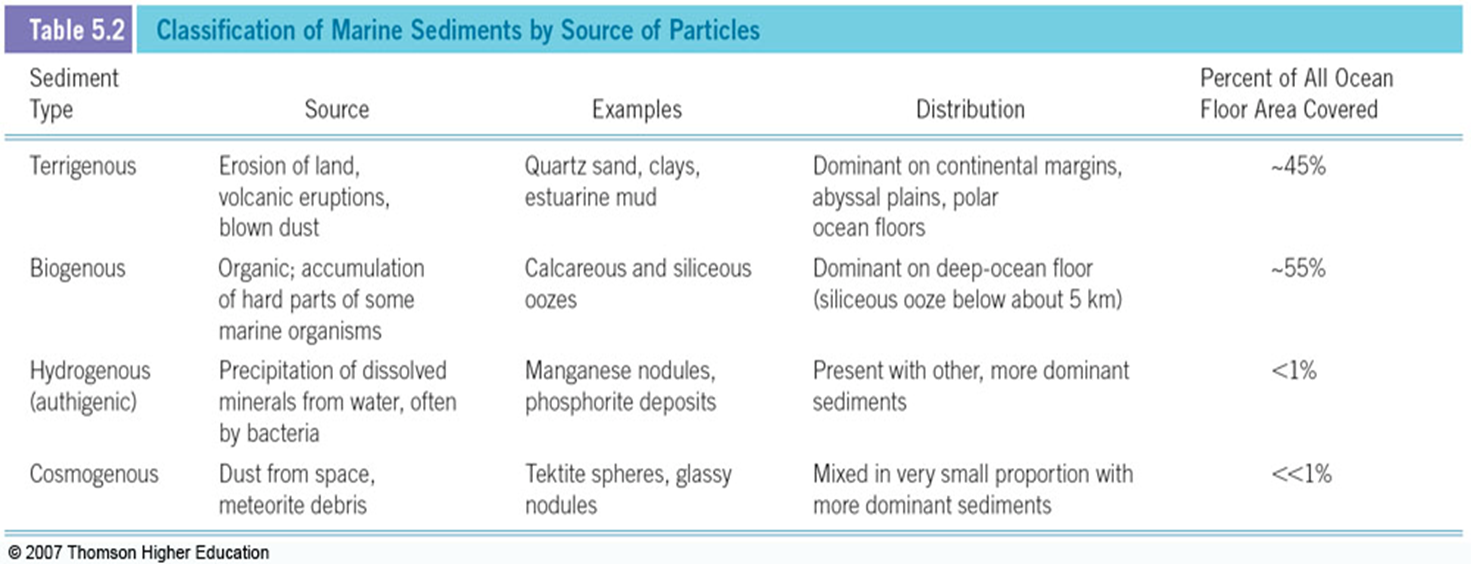
Type Source
Terrigenous pre-existing rock
(or Lithogenous) all land derived material
Biogenous living organisms
Hydrogenous precipitation from sea water
Cosmogenous space
North Atalntic Spring Bloom: Productivity patterns, what happens to phytoplankton and zooplankton?
Drop in phytoplankton in April/May (bloom of phytoplankton then eaten by predators)
Mixing = nutrients brought down to lower levels to help productivity
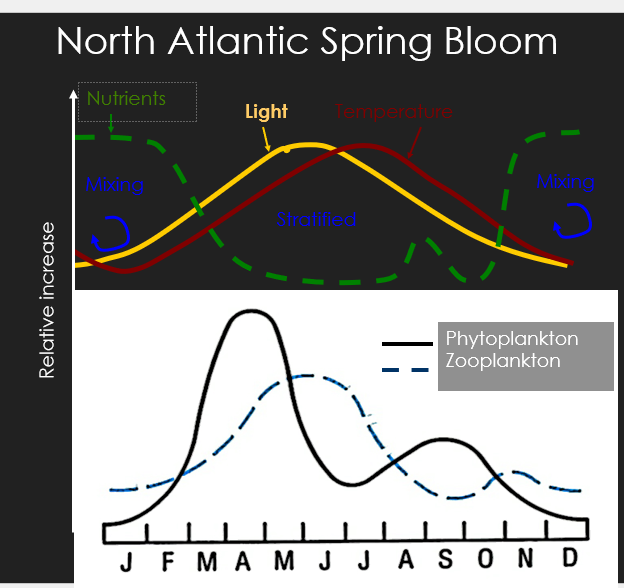
How does productivity impact fisheries yield?
Inc in primary production = inc in fisheries yeild
amt of primary production differs btwn locations (upwelling zones = high PP bc getting deep sea nutrients)
Eutrophic = top of graph, high nutrient availability
Oligotrophic = bottom of graph, low nutrient availability
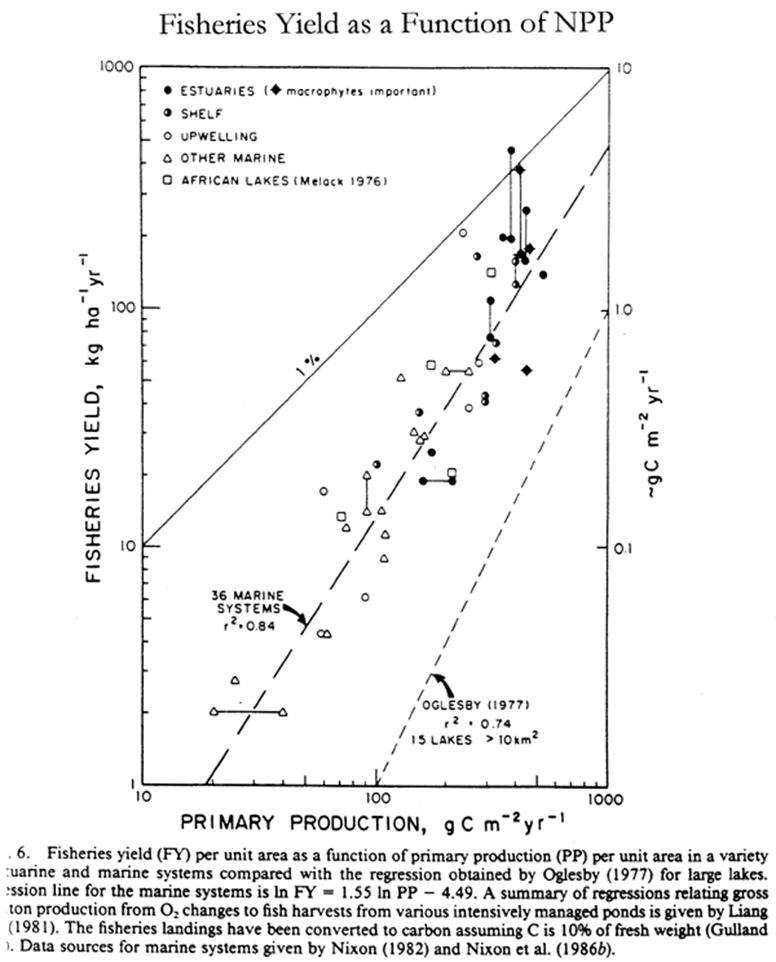
Main takeaways of Menge, Daskalov, Hacker, Silliman, Hughes, Fugiwara papers
Hacker and Bertness identified a potential positive interaction in salt marshes. What was it?
Plant species fixed soil for other species therefore diversity is a lot higher (ex. plant reduces salinity which improves the conditions for other plants)
Silliman’s study change a widely held idea about salt marsh communities. How?
Showed that predators impact trophic cascade. It is actually a top-down cascade
What is the origin of the majority of deep sea sediments?
From surface (biogenious) things that drift down, dead organic matter/detritus
Explain these patterns:
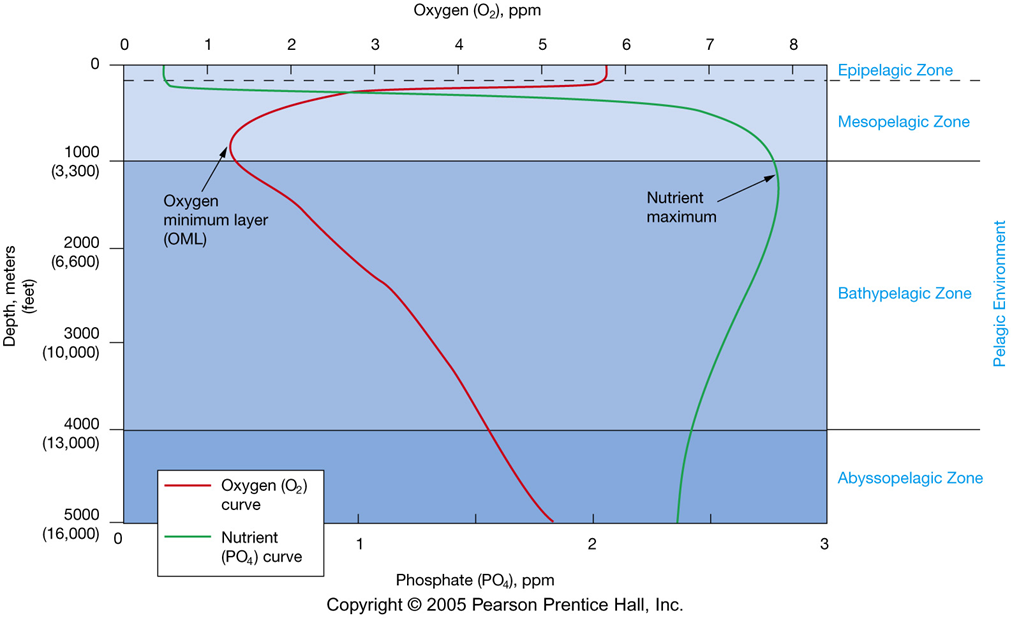
Nutrients high in deep zone because of dead organic matter
Things that can take advantage of nutrients are in short zone (why nutrients low)
Phytoplankton producing oxygen, oxygen dissolving into ocean water/high gas exchange (why oxygen high in low zone)
No photosynthesis/no new oxygen produced and high respiration/org eating DOM (why oxygen decreases in midd zone)
cold dense water masses/oxygenated water sinks to bottom (why higher in bottom zone)
no primary producers to consume nutrients (why they accumulate in bottom zone)
Overall trend:
Surface: Life uses nutrients and sunlight to produce oxygen (photosynthesis). (Nutrients dec, Oxygen inc)
Middle/Deep: When that life dies and sinks, the process of decomposition uses oxygen to release the nutrients back into the water. (Oxygen dec, Nutrients inc)
What happens to oxygen/nutrients in pelagic environments: Where is it dissolved? Where is nutrient max? Where does oxygen inc?
Dissolved O2 minimum layer about 700-1000 m
Nutrient maximum at about same depths
O2 content increases with depth below
Coriolis effect
Explains why we have general clockwise movement of water in the Northern hemisphere and general counterclockwise movement of water in the Southern hemisphere
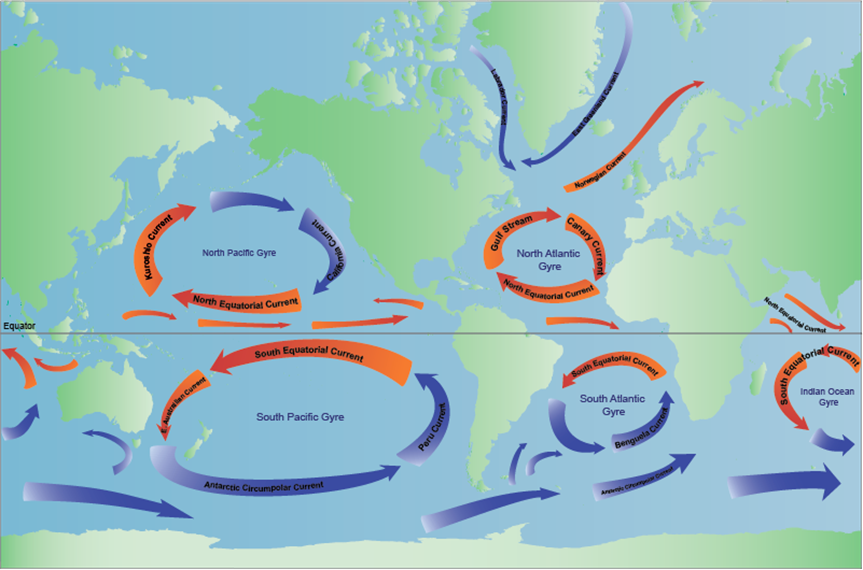
Ekman transport
Ekman transport is a fundamental concept in oceanography that explains how wind drag on the ocean surface translates into net water movement at an angle to the wind, due to the influence of the Earth's rotation (Coriolis effect).
The wind pushes the surface water
The rotation of the earth deflects the water.
The result is a net, 90 degree movement of the water relative to the wind (N: 90 to right, S: 90 to left)
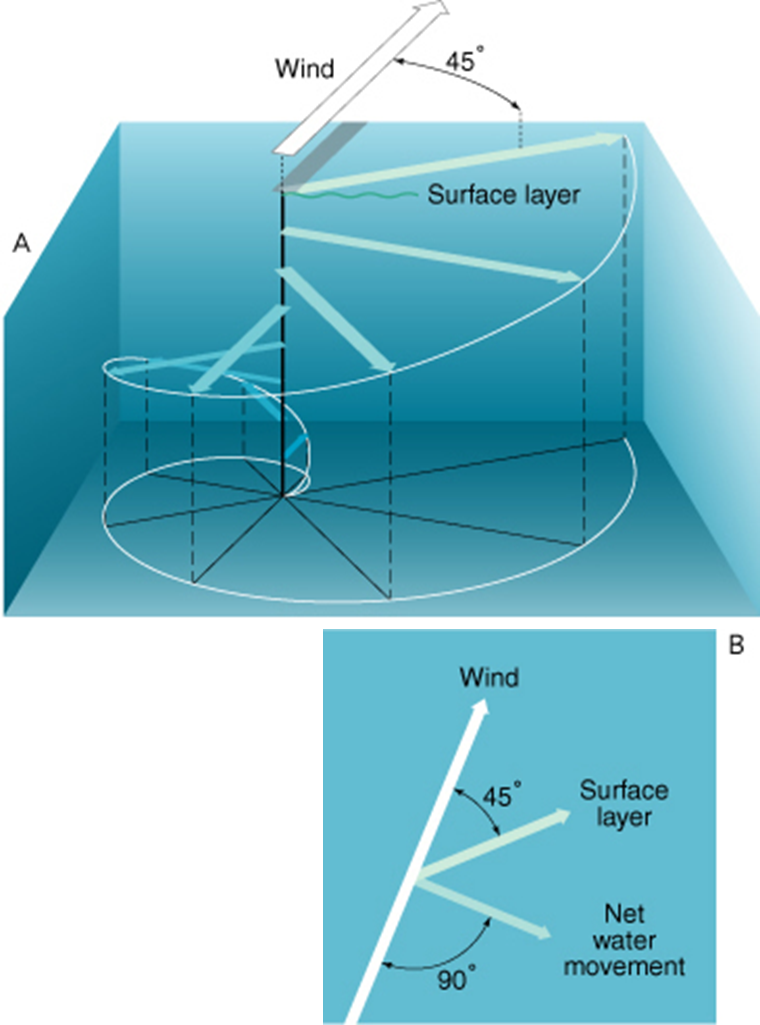
How does Ekman result in upwelling?
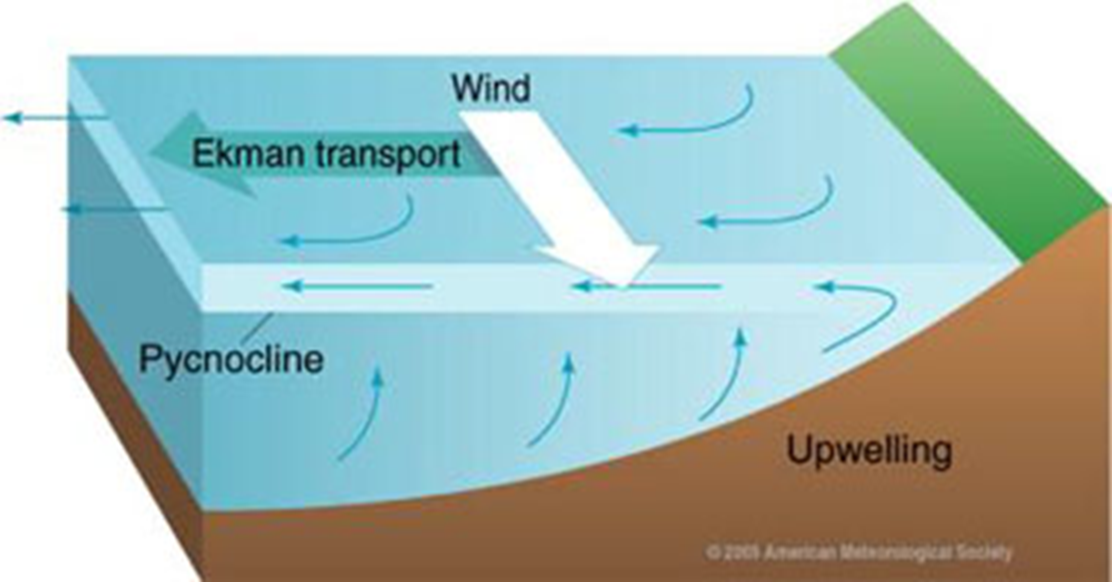
Ex. along west coast the net water movement is 90 to the left. Wind is coming down south
The water that is moved to left is replaced by deep ocean water (upwelling). Cold bottom water comes up along continental shelf, nutrients available in coastal zone: phytoplankton can now eat, zooplankton can now eat phyto, big fish eat zooplankton etc (imp for commercial fishing/food webs)
Helical vortices how do these impact nutrient flow?
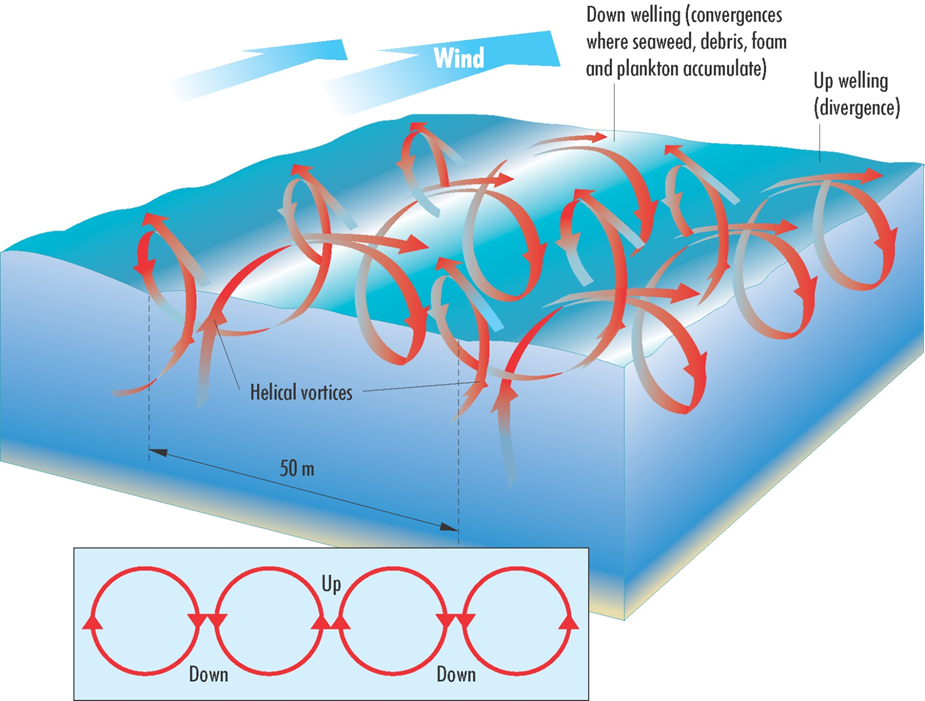
Ocean mixing due to wind allows nutrients to come to surface, oxygen to go down deeper
El nino vs. La nina patterns
El Niño (La Niña) is a condition in the Pacific ocean and characterized by the cyclic warming (cooling) of the central and eastern equatorial Pacific (CEEP).
El nino = warmer than normal
La nina = cooler than normal
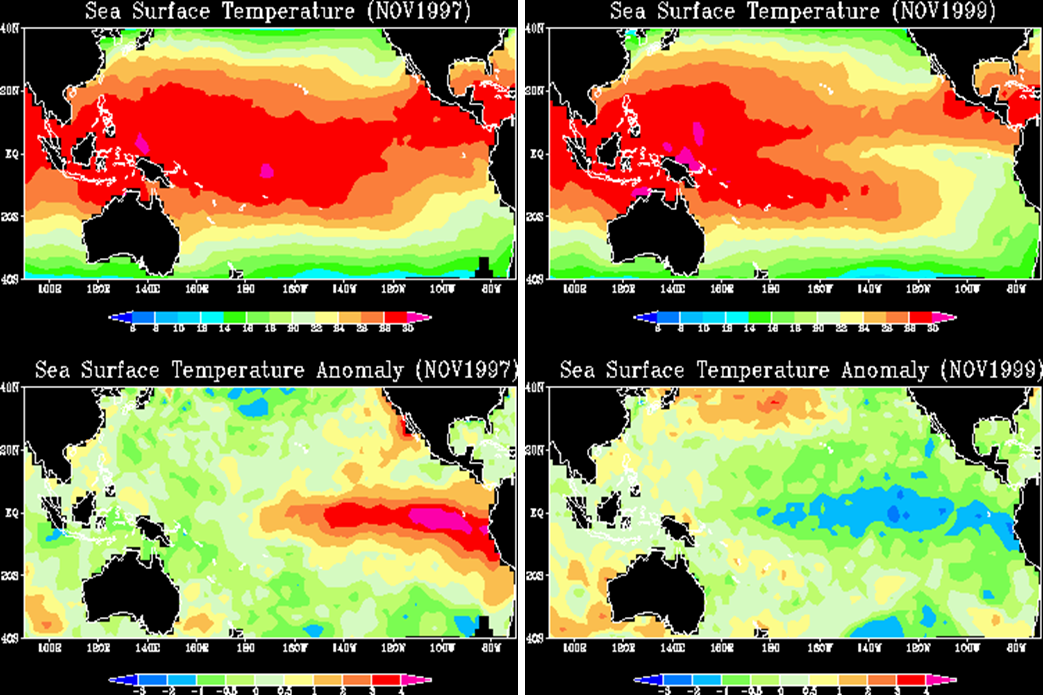
How do they see if it is el nino or la nina?
Specialized buoys
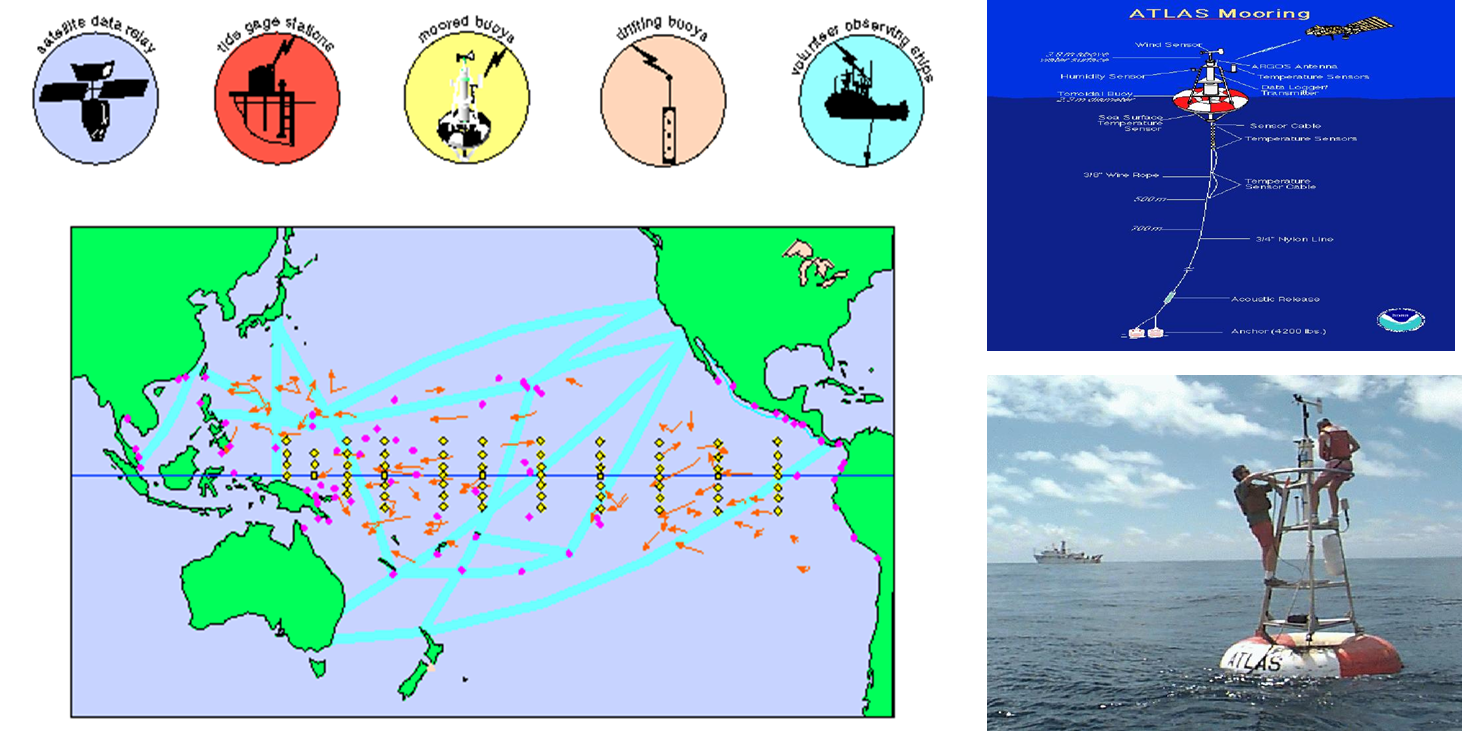
Southern oscillation
Southern Oscillation is the atmospheric component of ENSO (el nino southern oscillation) and measured in terms of the difference in standardized pressure anomalies over Tahiti and Darwin, and wind anomaly at low level winds (850 mbs level).
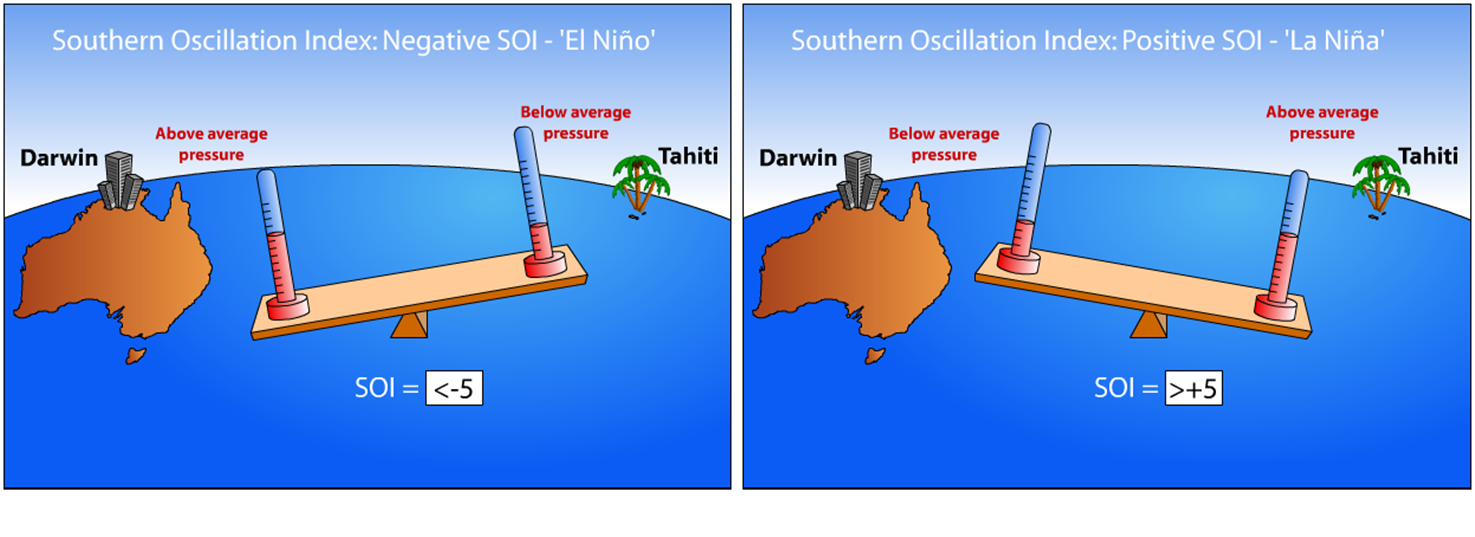
Pressure differential
What does ENSO in tropical pacific look like, what are the weather patterns?

Clouds = wet weather
Feature | El Niño (Warm Phase) | La Niña (Cool Phase) |
Equatorial Pacific SSTA | Warmer than average | Colder than average |
Trade Winds | Weaker or reversed (blow East) | Stronger than normal (blow West) |
Warm Water Location | Shifts eastward toward South America | Piles up in the far Western Pacific |
Upwelling | Suppressed (Warm surface water blocks cold, nutrient-rich water from rising) | Enhanced (Stronger winds push more surface water away, increasing upwelling) |
Impacts of ENSO and Non-ENSO on Phillipine annual rainfall
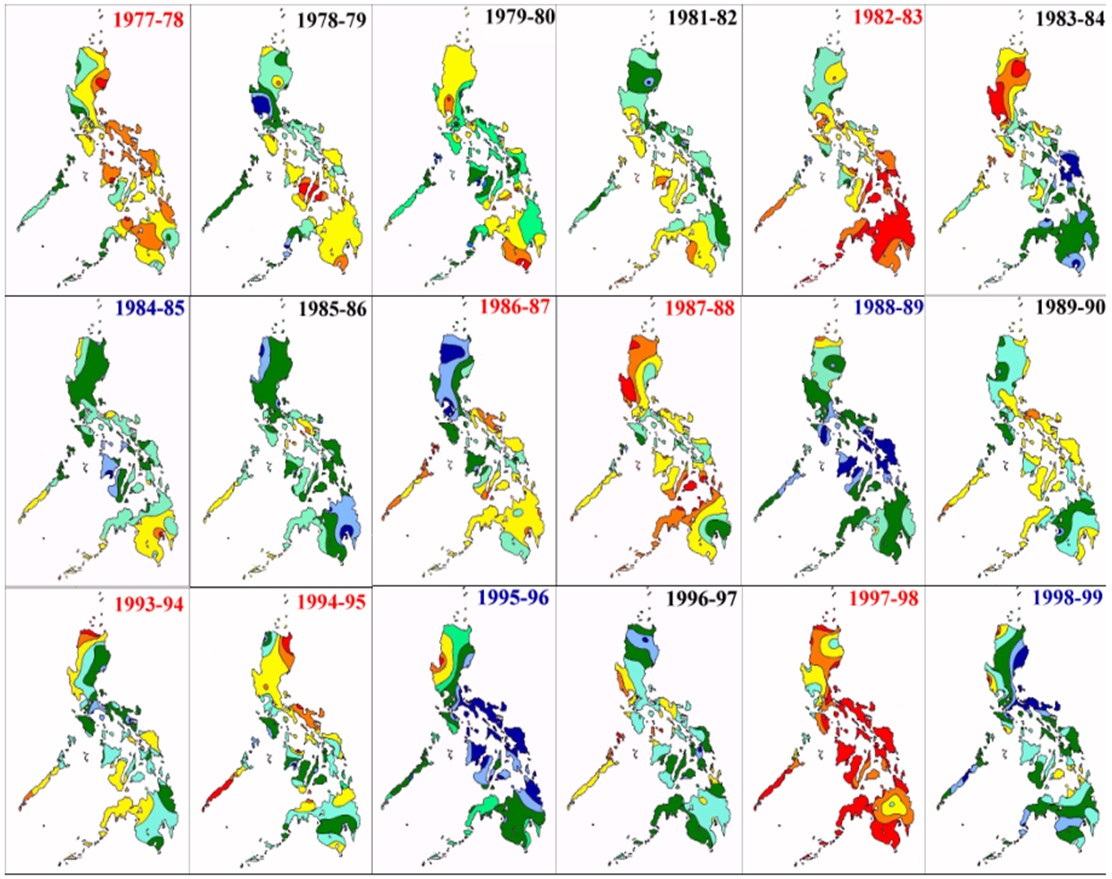
Red = El nino
Blue = La nina
Red = drought
Blue = wet
FADS - Fishing aggregating device
Why the phenomenon?
Manmade object put in middle of ocean to attract fish
Phenomenon = Fish accumulate around things floating on surface (debris, algae etc)
Why? Shelter, protection (structure offers refuge), potential food source, currents/forces that cause thing to be there will bring nutrients with them (evolutionary adaptation)
Meeting place hypothesis: let’s meet at object and we’'ll find other members of same species to mate with
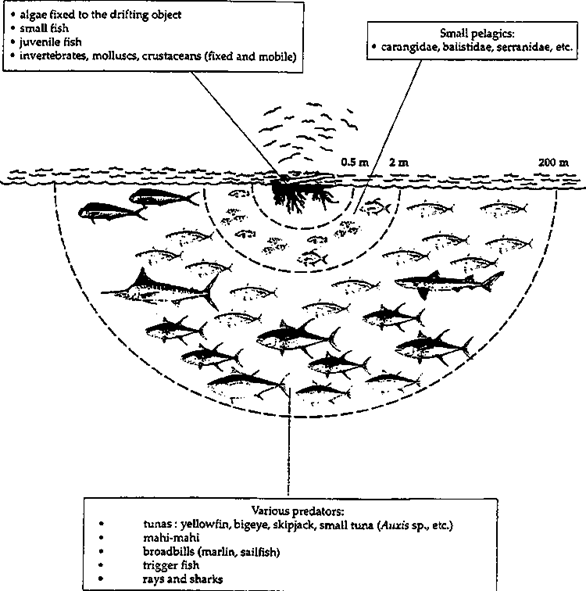
Why is oxygen at a maximum at the ocean surface? Why are nutrients so high on the ocean floor?
Diffusion
DOM
What are the consequences of the Coriolis effect?
Dense patches of garbage
Ekman transport (wind against water w/ friction) which causes upwelling
Why do we care about el nino?
Has an impact on fishery productivity
Effect on agriculture (flooding or drought depending on where you are)
The LNG project
Compressed natural gas on ships goes into the buoy as decompressed gas, which then goes into tubes
Hypothesis: more fish at buoys because of structure FAD
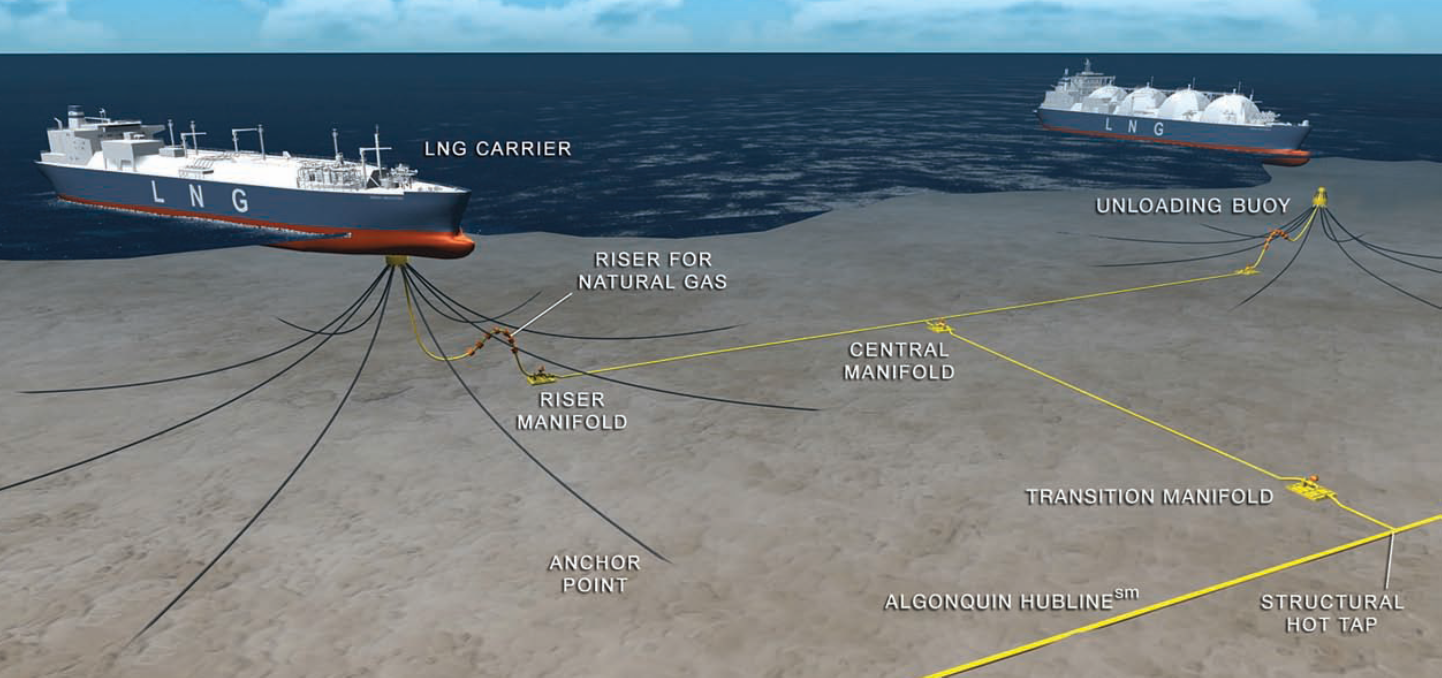
What was result of LNG project
no diff in density of fish btwn controls and structure
Pattern of acoustic imaging: not oversampling one area, interior & exterior being sampled equally (no time bias)
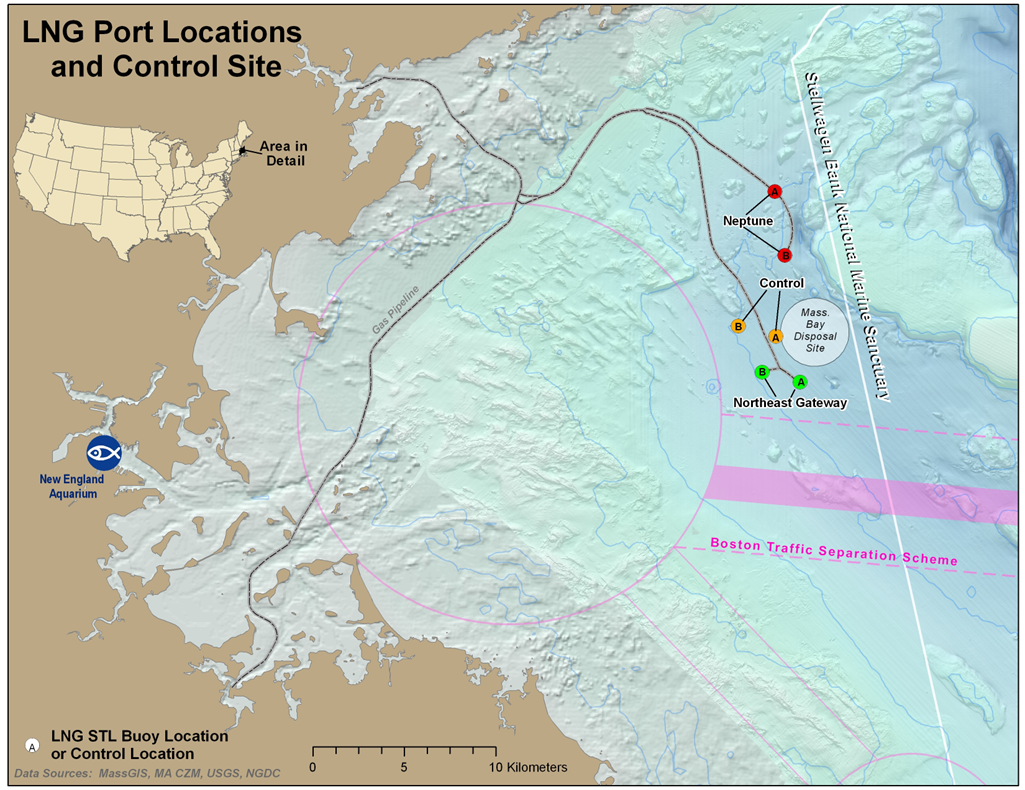
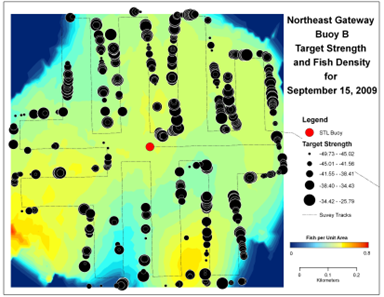
What is the distribution of benthic organisms? And why?
More benthos beneath areas of high primary productivity
Mainly on continental shelves
Affected by surface ocean currents
More biomass on coast (nutrient availability higher), more shallow water (warmer + sunlight), more structure
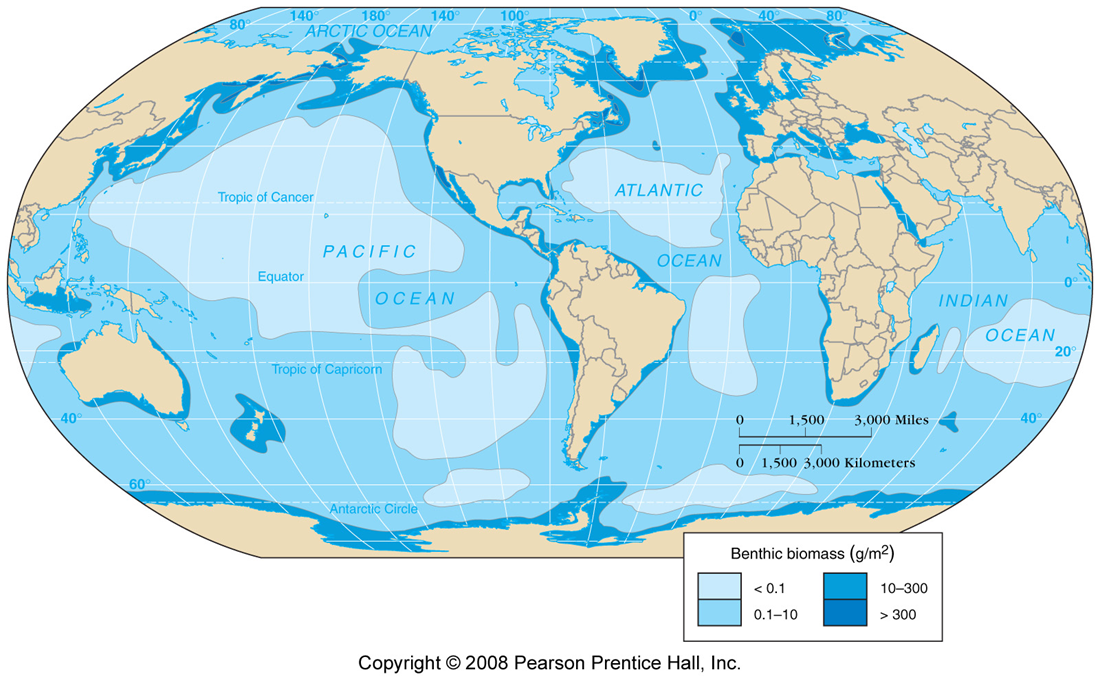
Anatomy of the continental shelf: POM, DIN, DOM
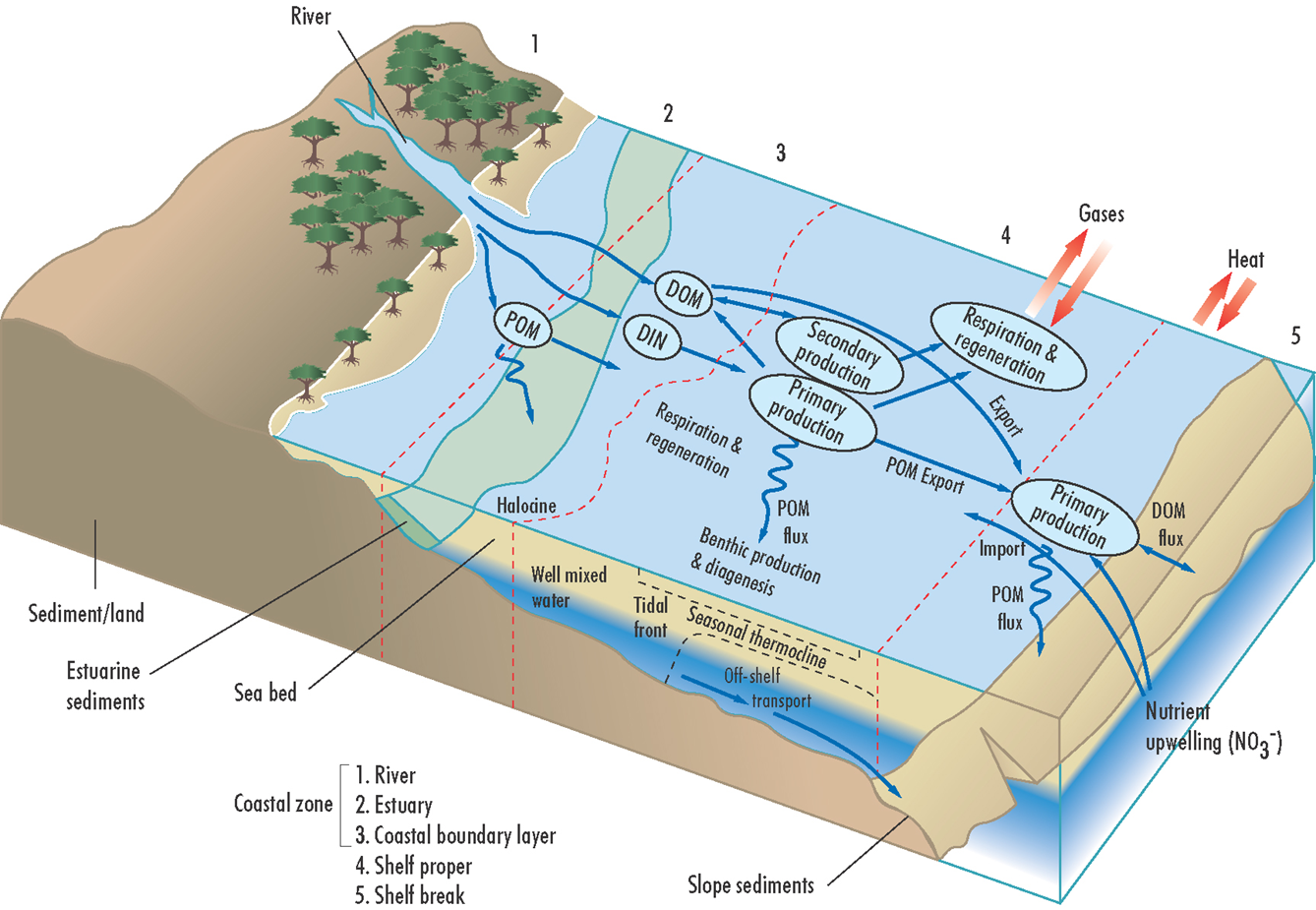
Shallow continental shelf habitats: predators or scavengers
Many generalists in the benthos including many facultative scavengers (if they have opp they’ll do it but don’t need to)
Some organisms rely on dead material and are tolerant of low food periods
What types of grazers in benthic areas? Why are they important?
Herbivores include fish and invertebrates and encrusting inverts. Grazers are often important habitat modifiers, removing dominants that would otherwise take over
Fish are primarily herbivorous at lower latitudes. Why?
benthic continental shelf fish are more commonly herbivorous due to a combination of high water temperatures, abundant plant-based food, and co-evolutionary relationships with coral reef ecosystems
Particle feeders often drive benthic/pelagic coupling. What does that mean?
Energy/nutrients in pelagic, suck it in and turn it into larvae and feces in benthic habitat (tunnicates do this) (bring pelagic nutrients and energy to the benthos) They filter tens of liters of water per day
Why is particle feeders feces important? And where are particle feeders more abundant?
Feces provide a rich substrate for microbial communities
Tend to be more abundant in shallow water where phytoplankton are abundant
What are bioturbators and d4 examples?
Burrowing into sediment
Callianasid shrimp, echiuran worms, predatory seastar, bobbit worm
What is bioturbation and who is doing it?
Turning over of the sediment and increasing sediment oxygen content
Can be surface bioturbators or burrowing
Often deposit feeders
What is a species assemblage?Sediment functional groups
What is identity of species in a particular place (a group of different species that coexist in a particular location and time)
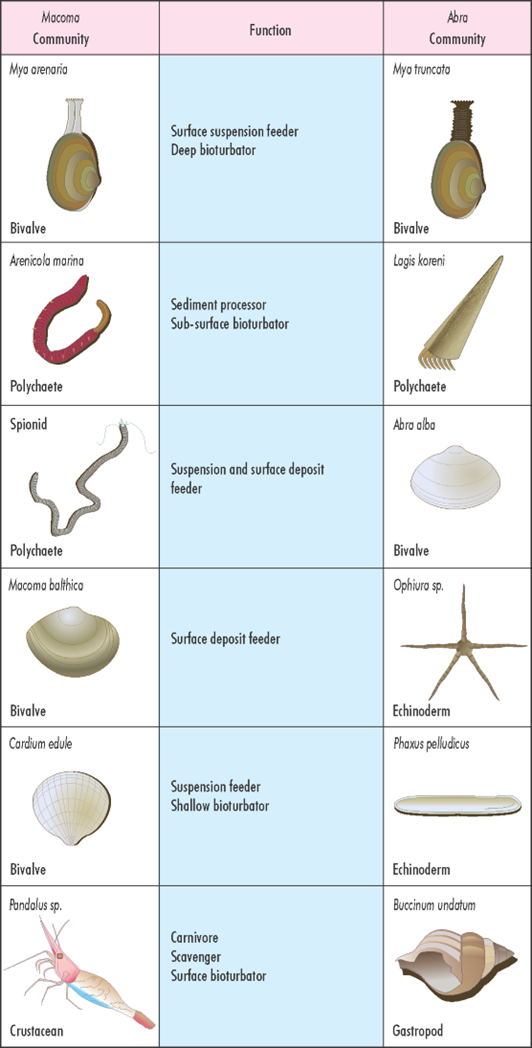
Different assemblages, same role
Why are hard bottoms rare and densely populated?
Organisms tend to be larger, taller
easy to grab on to
WHat might limit the use of hard bottom benthic habitats?
No refuge, burrowing limited
How does softness of sediment relate to biodiversity? What limits their depth?
The softness of sediment and particle diversity are directly related to the variety and number of infaunal organisms
O2, pressure
Substratum influence on biota distribution? How far can they be above or below the sediment?

Biota can extend up to two meters into the benthos and about 50 m above it
What influences the substratum?
Flow
High flow creates hard sediment, and low flow creates soft sediment. The force of the water determines the size and composition of the particles that are moved and deposited. The process involves both erosion (wearing away) and deposition (dropping off)
Upwelling can bring diff nutrients
What is majority of biomass in continental shelf zone?
Bacteria
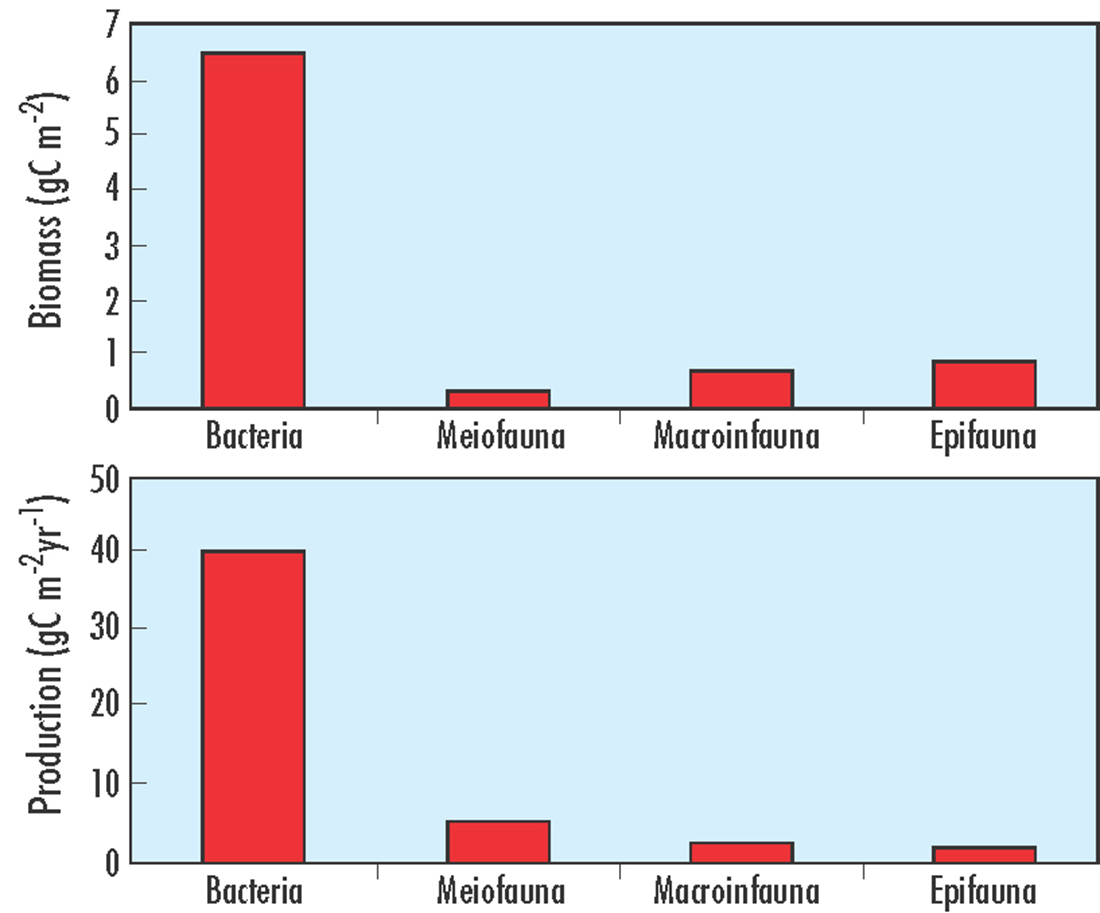
Epifaunal effects
Epifaunal effects refer to the ecological roles of benthic animals that live on or are attached to a surface, such as the seafloor, rocks, or vegetation.
Epifauna are capable of influencing the water column by modifying flow and depleting resources
Ex. phytoplankton depleted by mussel filtration over time
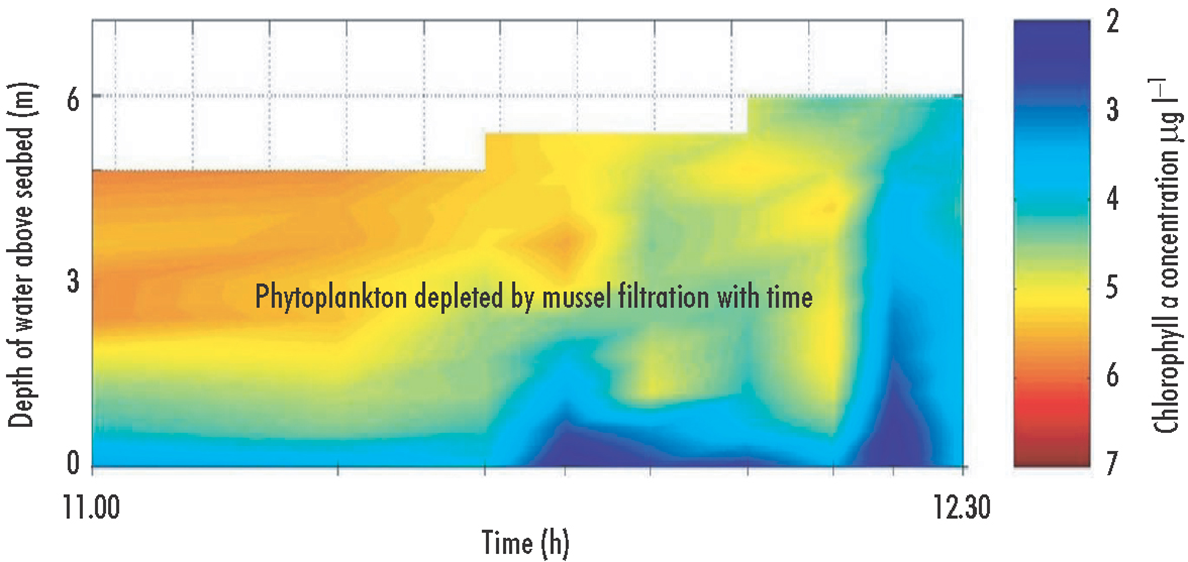
You’re on the open ocean and you want to catch some fish. What might you look for and why?
Garbage, structures
Fish meeting point
Why might benthic pelagic coupling be important when it comes to biomass and diversity of continental shelves?
by connecting the seafloor (benthic) and the water column (pelagic) habitats. This exchange of energy, mass, and nutrients drives key ecological processes that support vibrant food webs and a wide variety of life. The coupling is especially strong on continental shelves because of their relative shallowness compared to the open ocean, which facilitates the transfer of organic matter and nutrients.
What influences sediment/substratum type on the continental shelf benthos?
Flow
Deep sea diversity: There are clear latitudinal trends in species richness/diversity. Why?
DOM and nutrients coming from productive areas above
What unique factors influence the biomass and diversity of the Cordell bank?
relatively shallow
right at oceanic edge where shelf drops off (upwelling of resources)
things abundant in blue water pelagic coming close
hard substratum (typically not common in deep sea), this allows photosynthesizers to latch on, as well as suspension and filter feeders
What threats are faced by the cordell bank national marine sanctuary?
inc temp from climate change → dead zones where O2 is depleted
Presistent ocean current patterns:
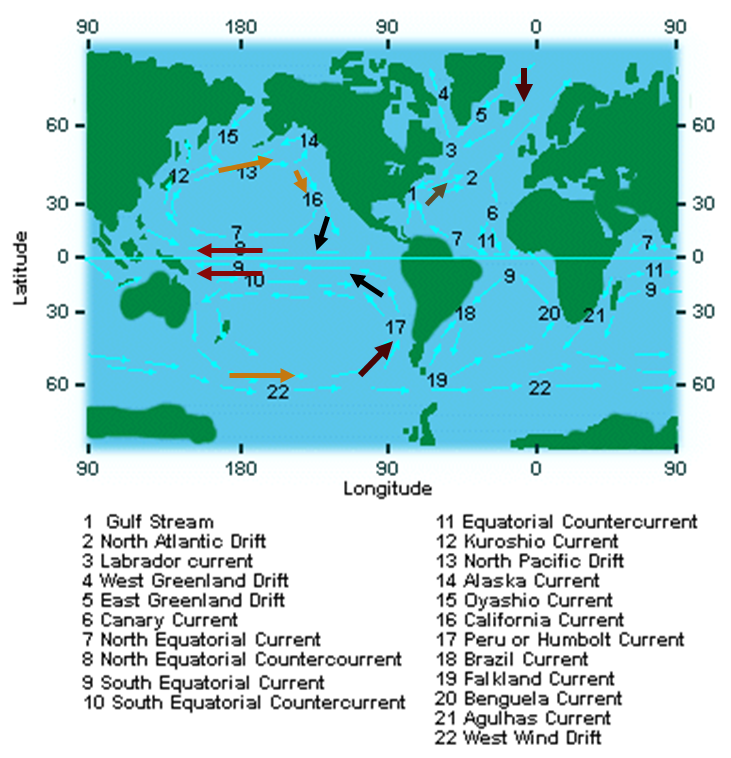
Currents converge toward Equator following Trade Winds and ITCZ
Westward flow along Equator (i.e., North and South Equatorial Currents)
Equatorial Currents turn poleward where they encounter land barriers (e.g., Gulf Stream)
Eastward flow of currents is enhanced by the Westerlies (wind)
Currents turn toward the Equator where they encounter land barriers, completing the gyres
Effects of surface currents, diff btwn poles and equator?
More solar heating and evaporation at Equator, less at Poles à salinity and temperature Equator/Pole gradient
Warm and salty water carried poleward
Deep currents: what does salinity and temp mean for density? What is the conveyor belt?
A. Thermohaline-driven currents
1. Greater salinity=greater density
2. Lower temperature= greater density
3. Equilibrium is sought in global-scale deep currents (conveyor belt = slow and is driven by evaporation and gain of water by precipitation and terrestrial runoff)
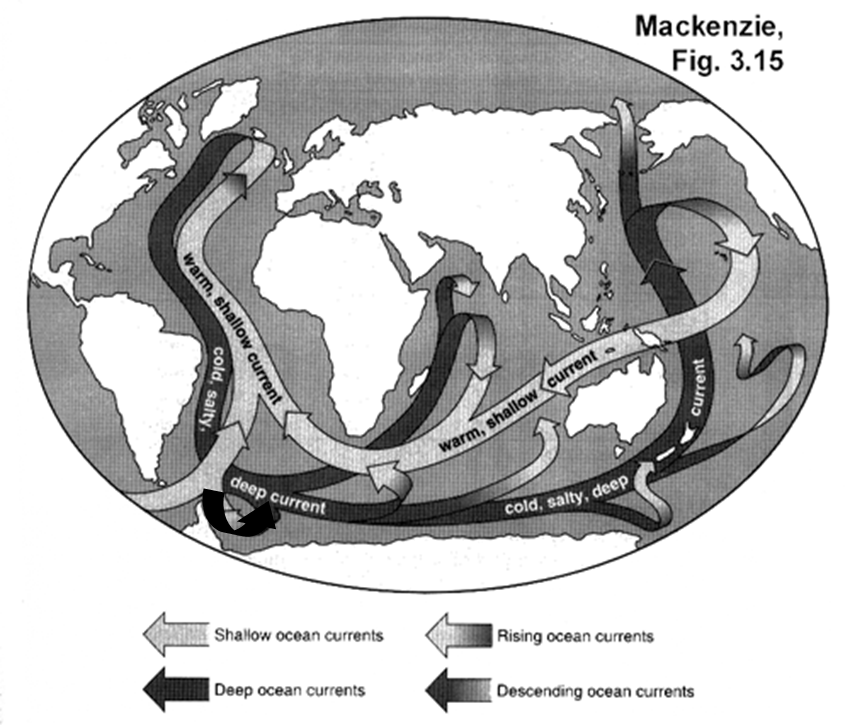
Is more of earth’s surface above or beneath sea level?
A lot right at sea level but majority beneath
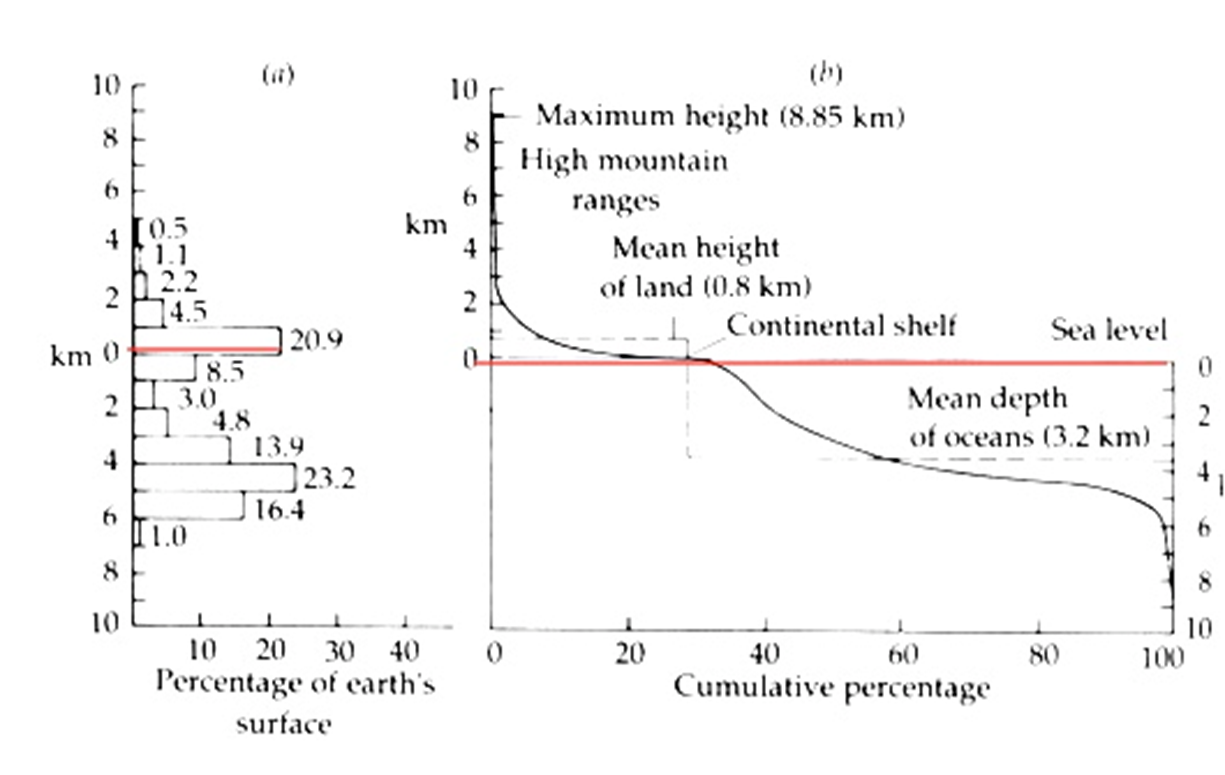
What depth is the deep sea?
Below the euphotic zone (200m+) and the shelf break
Deep sea: where do the sediments come from?
terrestrial and biogeneous materials
Oxygen uptake in deep sediemtns is 2 orders of magnitude lessthan shelf sediments. Why?
Lack of biological activity of living org that use O2 due to cold (low density of org)

Deep sea vocab
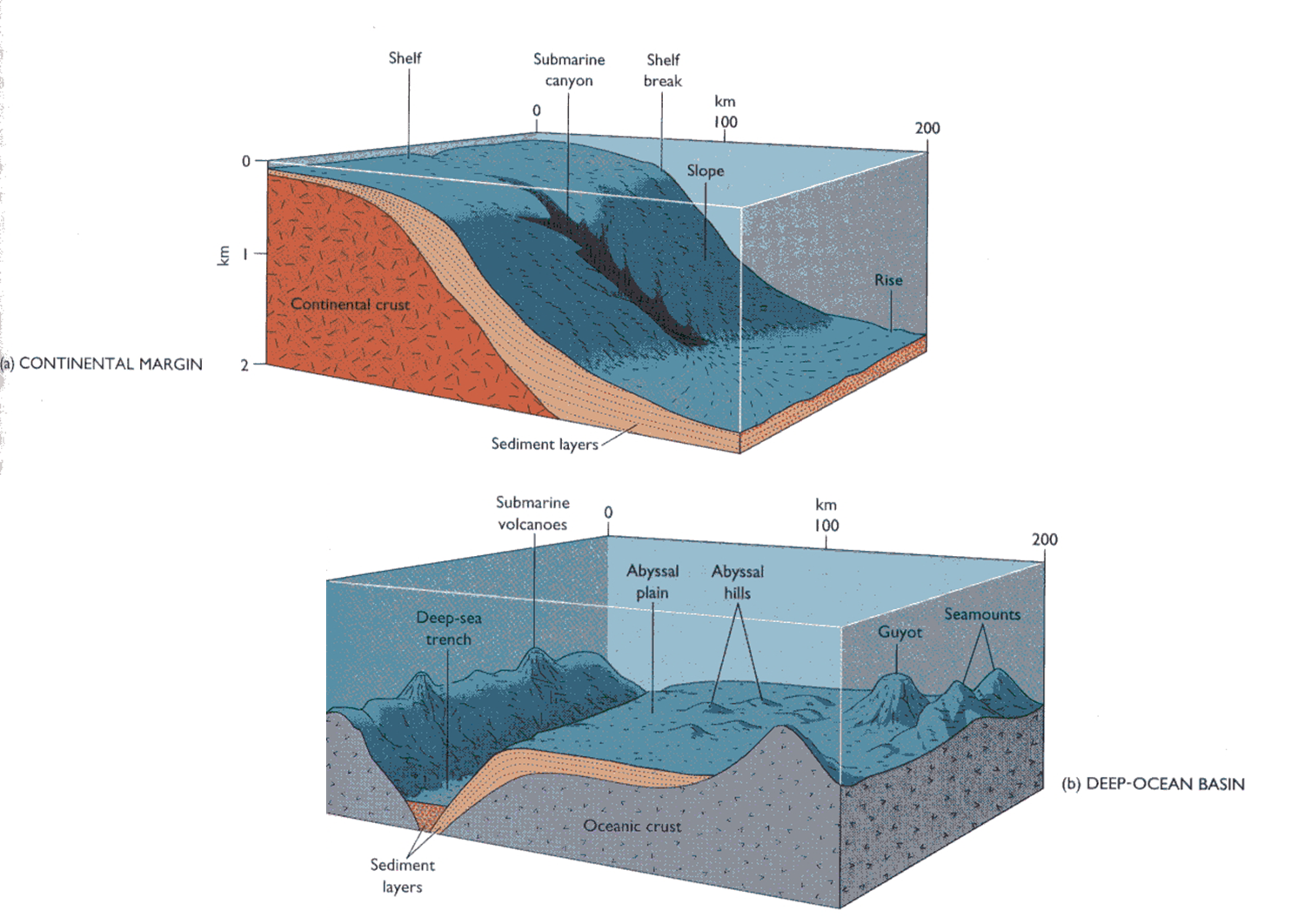
What are the abiotic factors in deep sea systems?
High pressure (1atm/33ft)
Low temperature (from -1 and 4◦C)
Total lack of sunlight
Lack of photosynthesis
Scarcity of food resources
Enormous volume of water further reduces encounter probability (mates, prey)
Distribution of benthic org?
Very low biomass in deepest parts of ocean, higher biomass at continental shelves
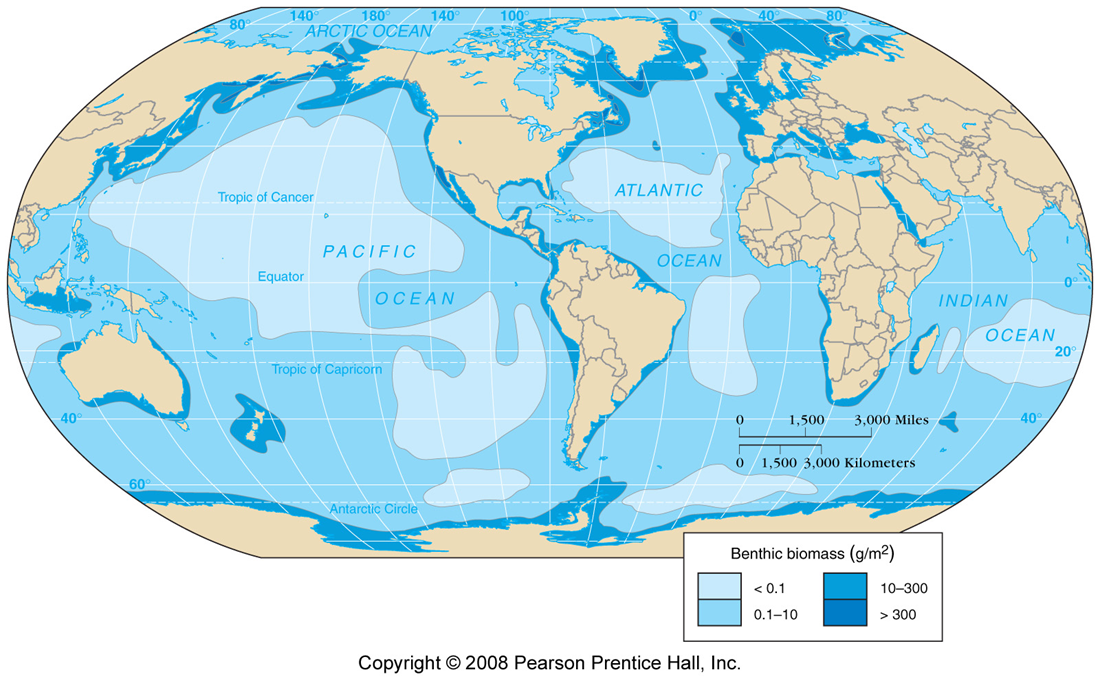
What percentage of the sea floor is below 3000 m depth?
75%